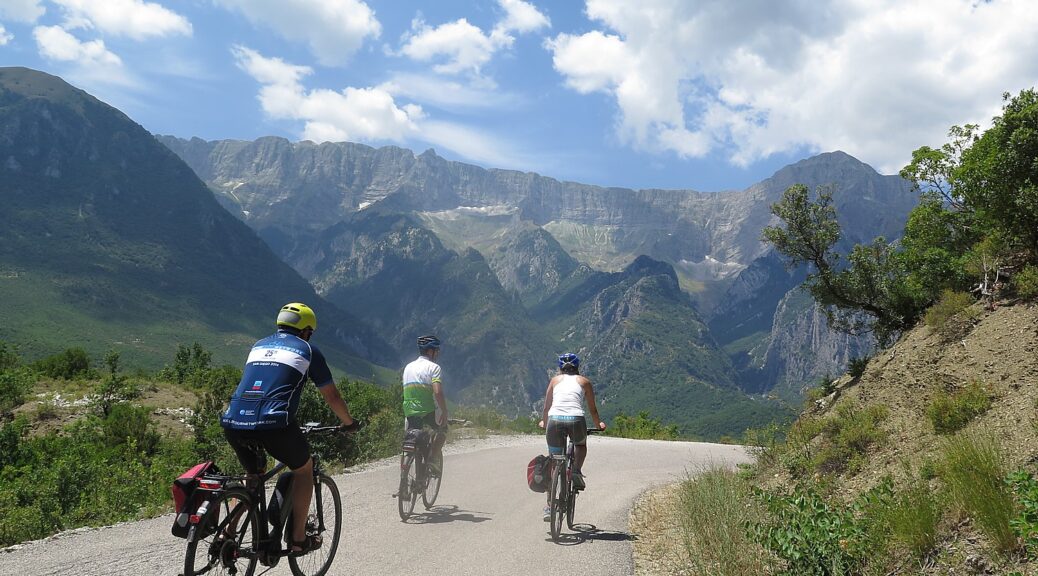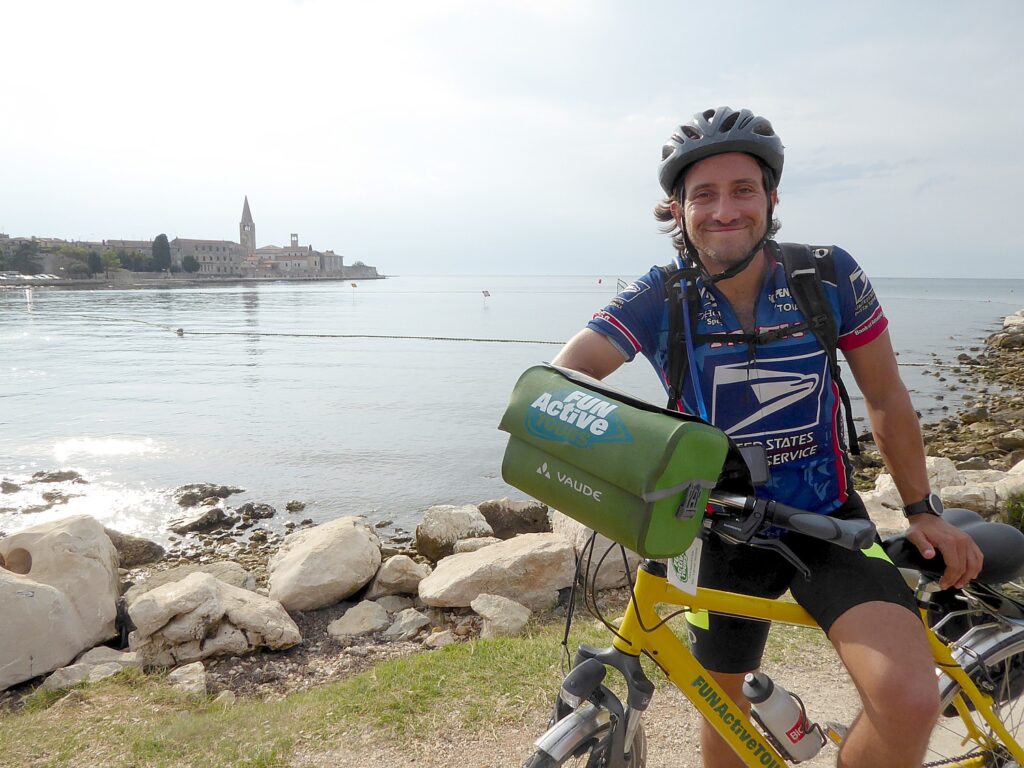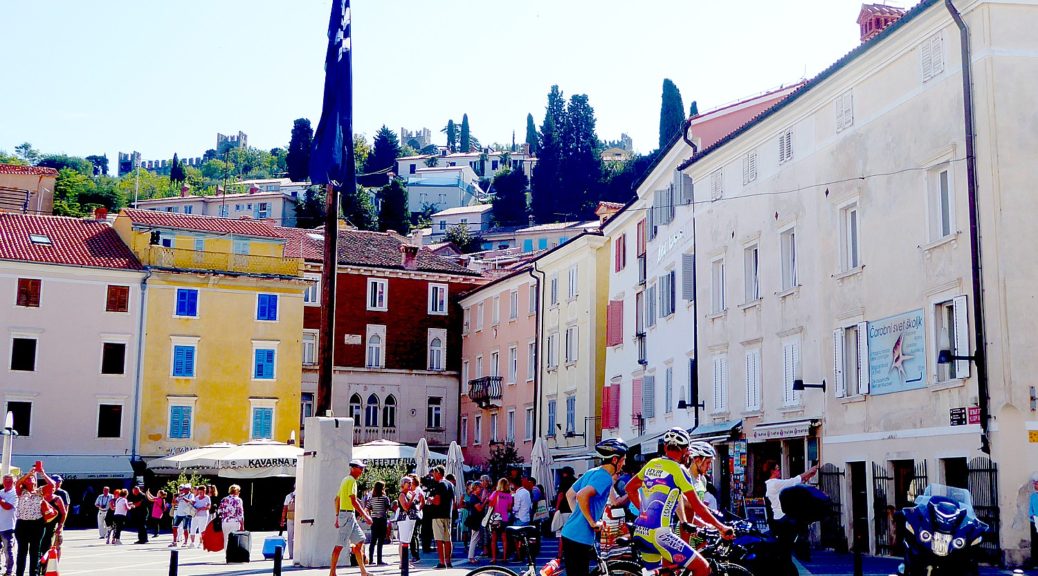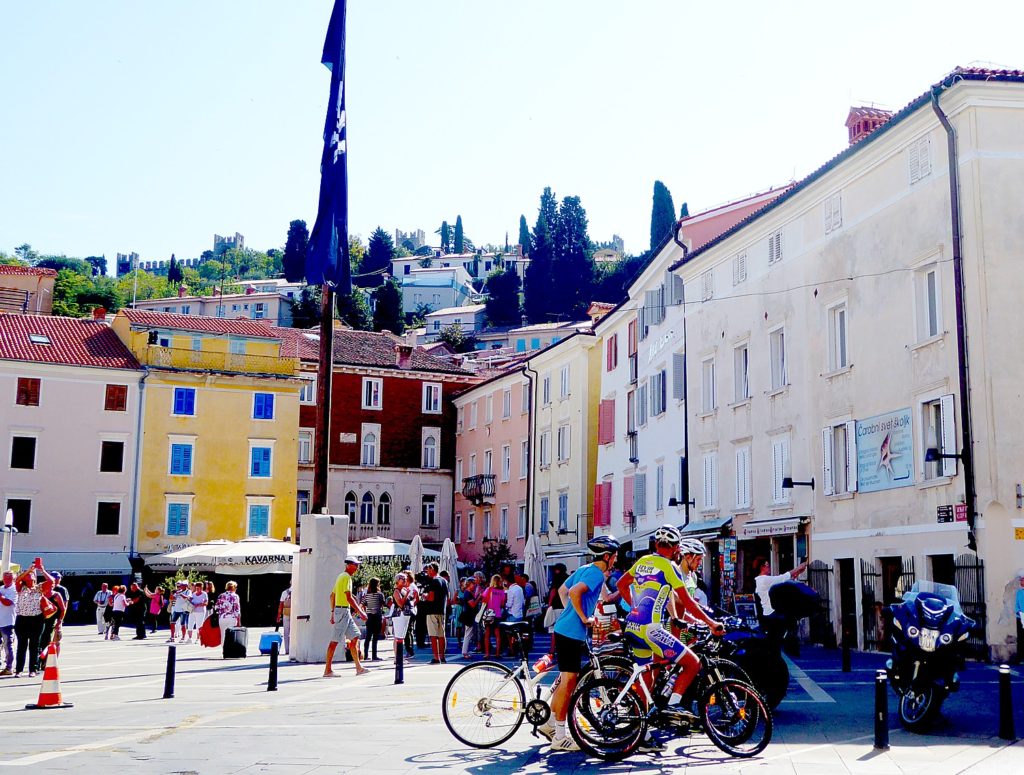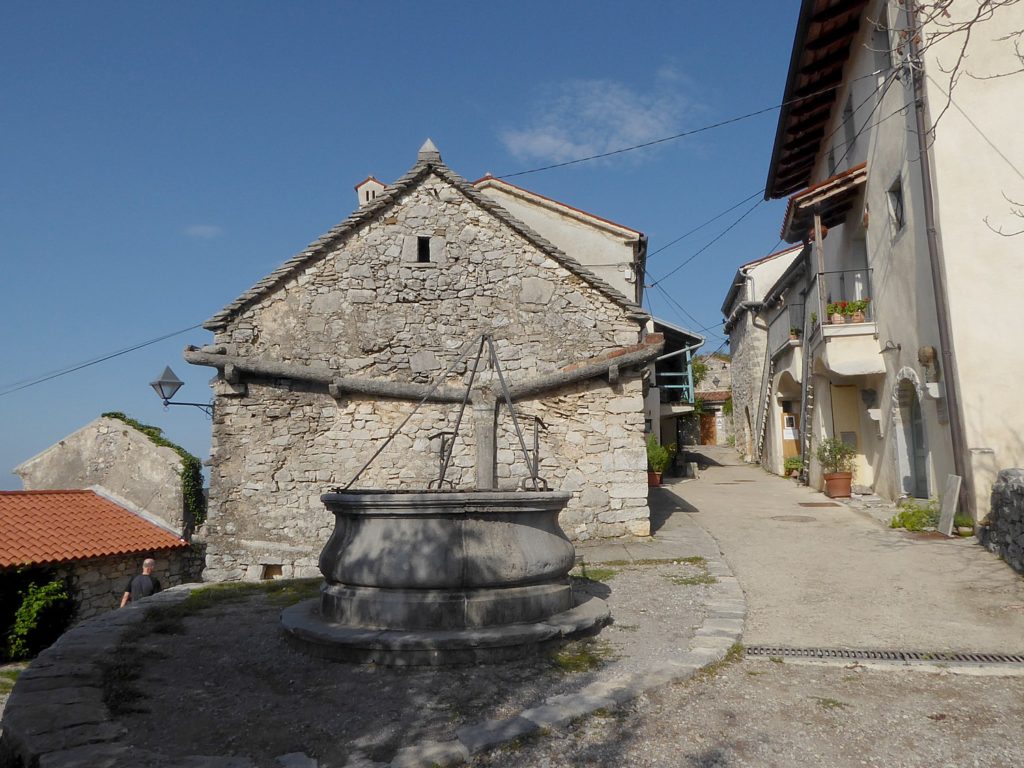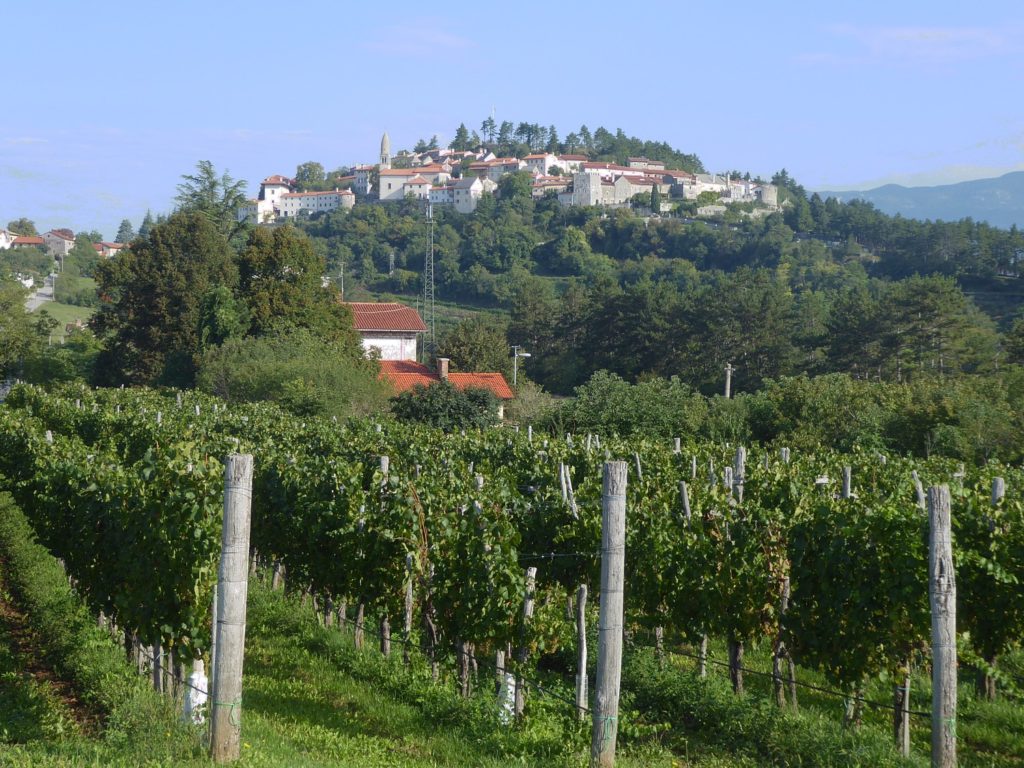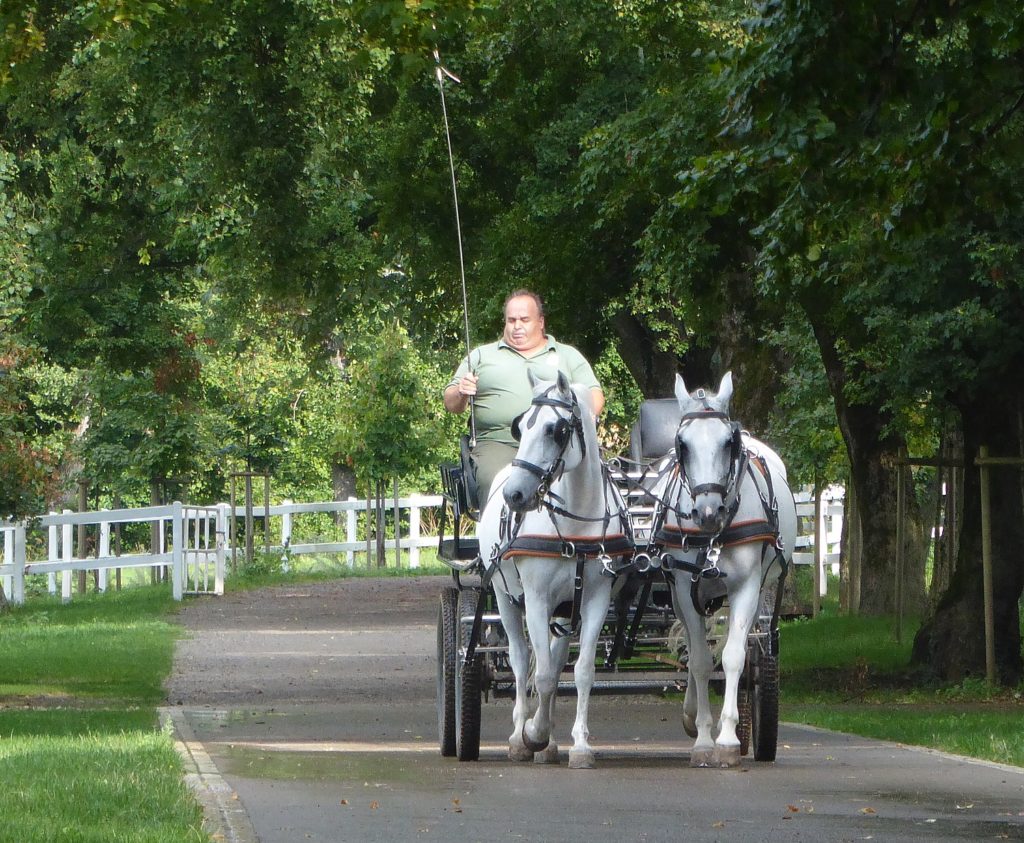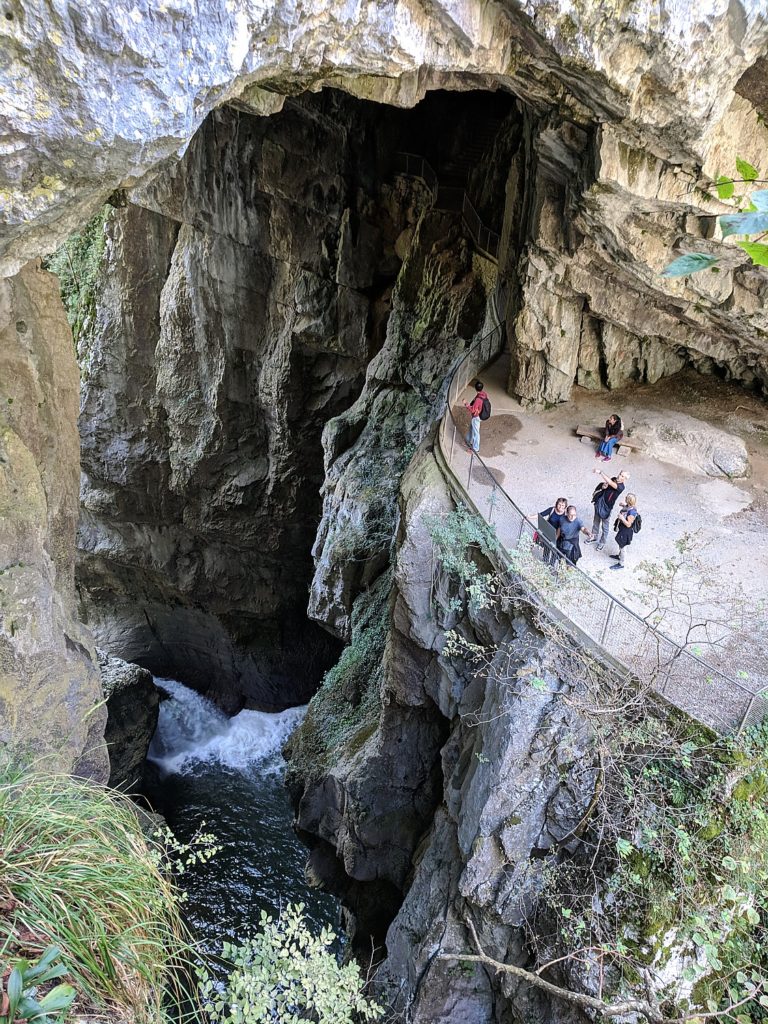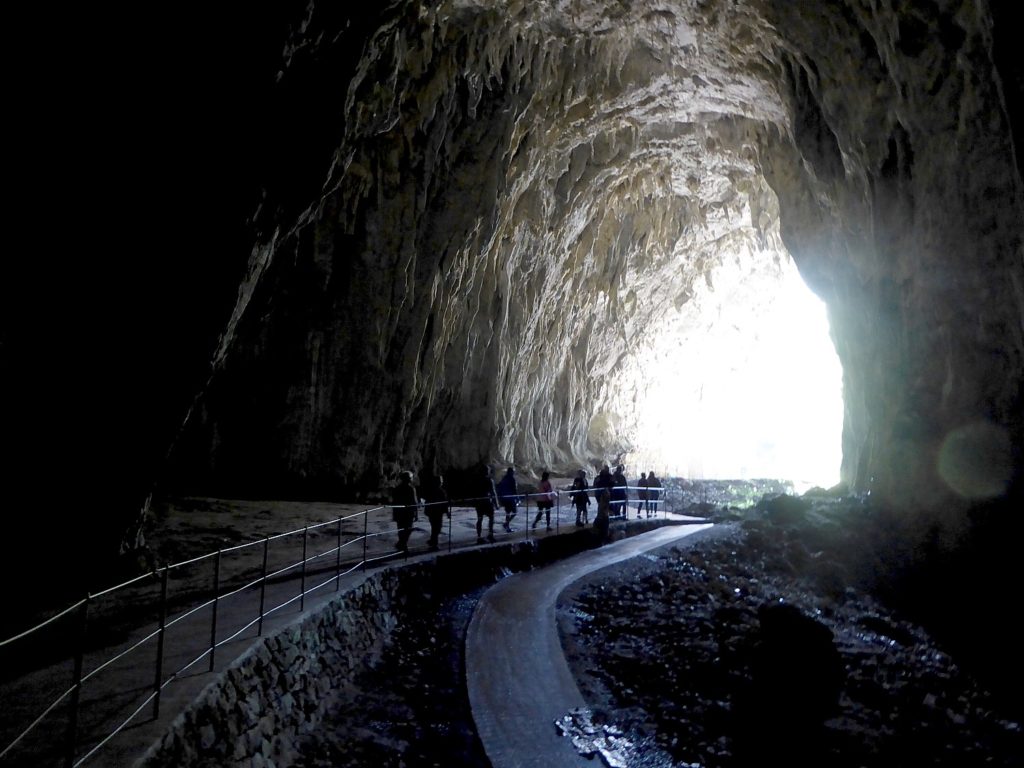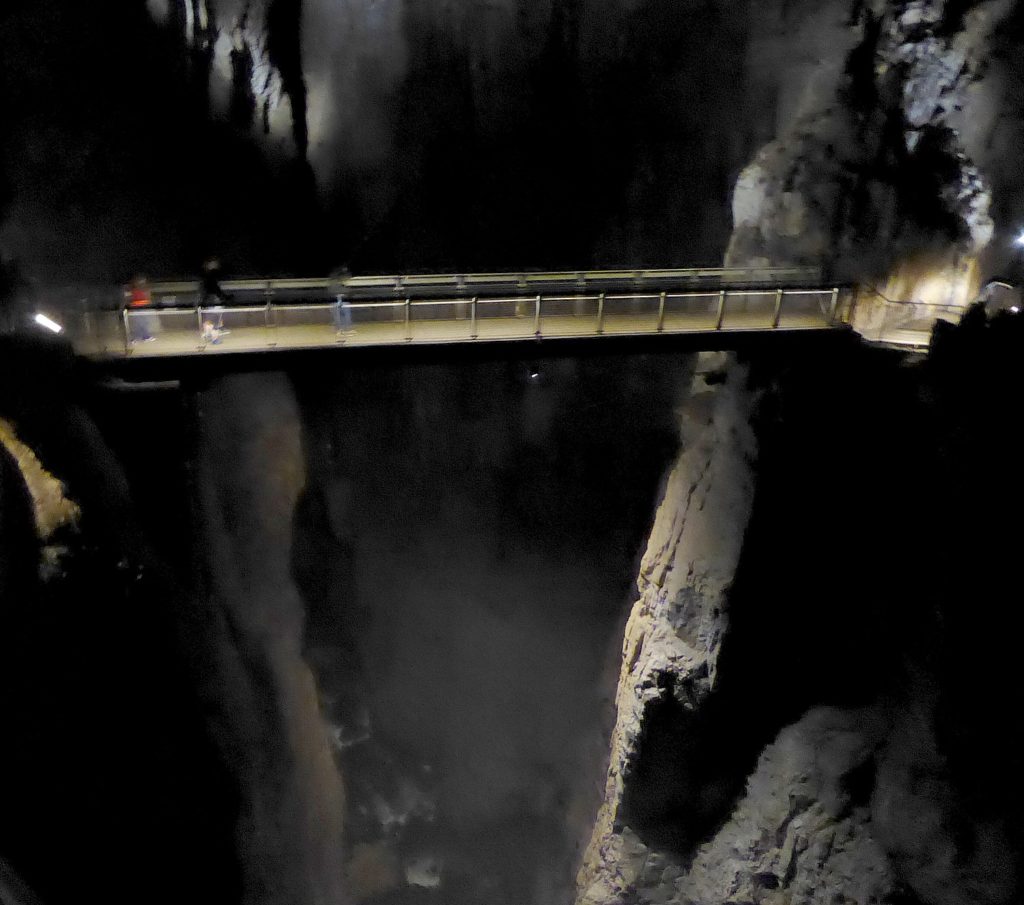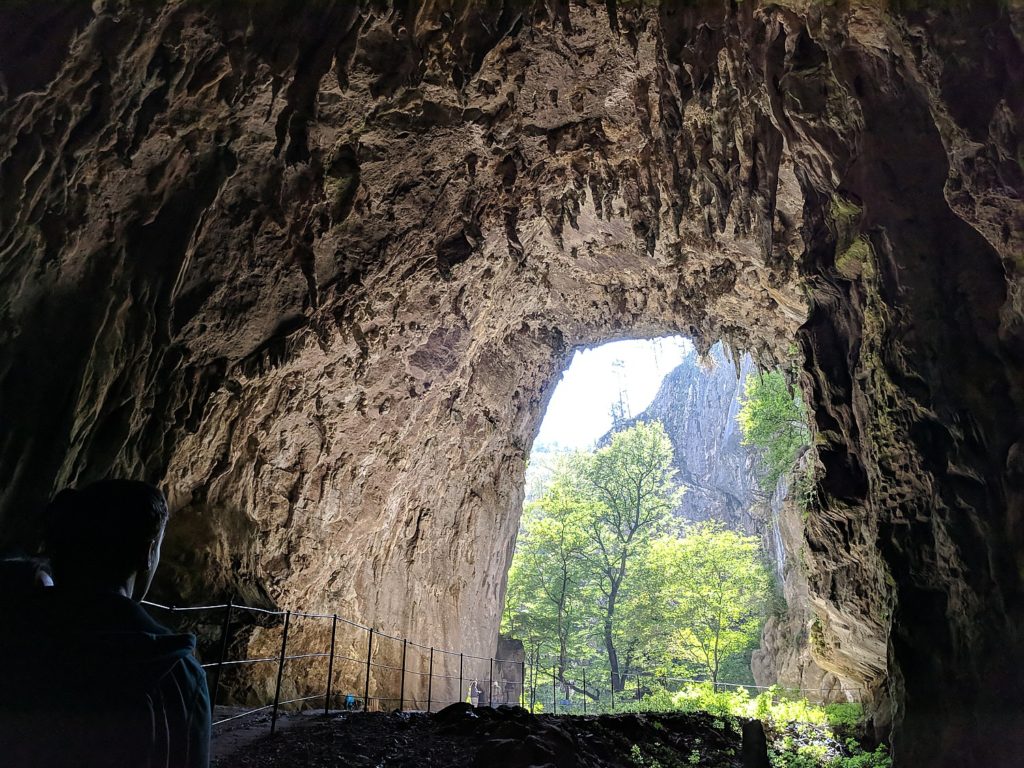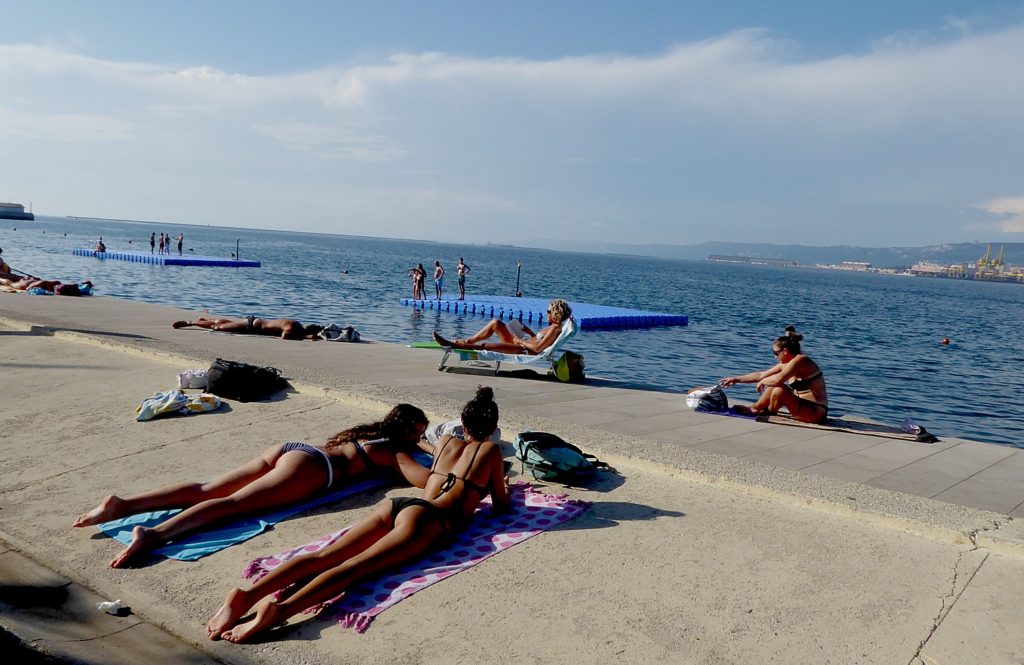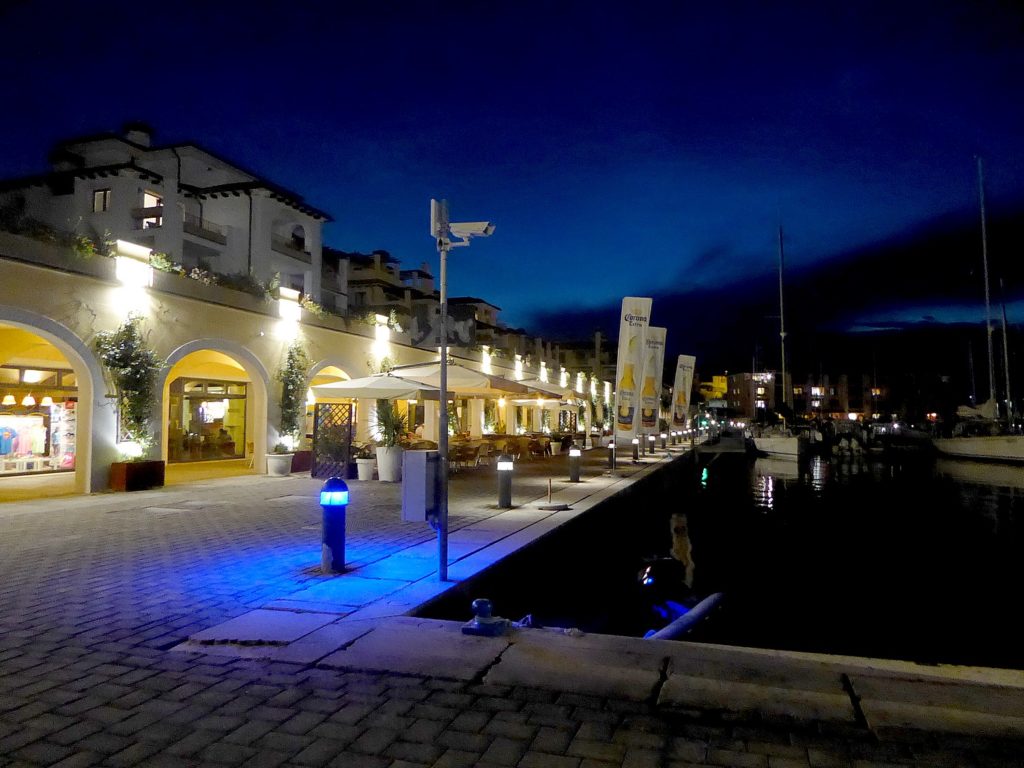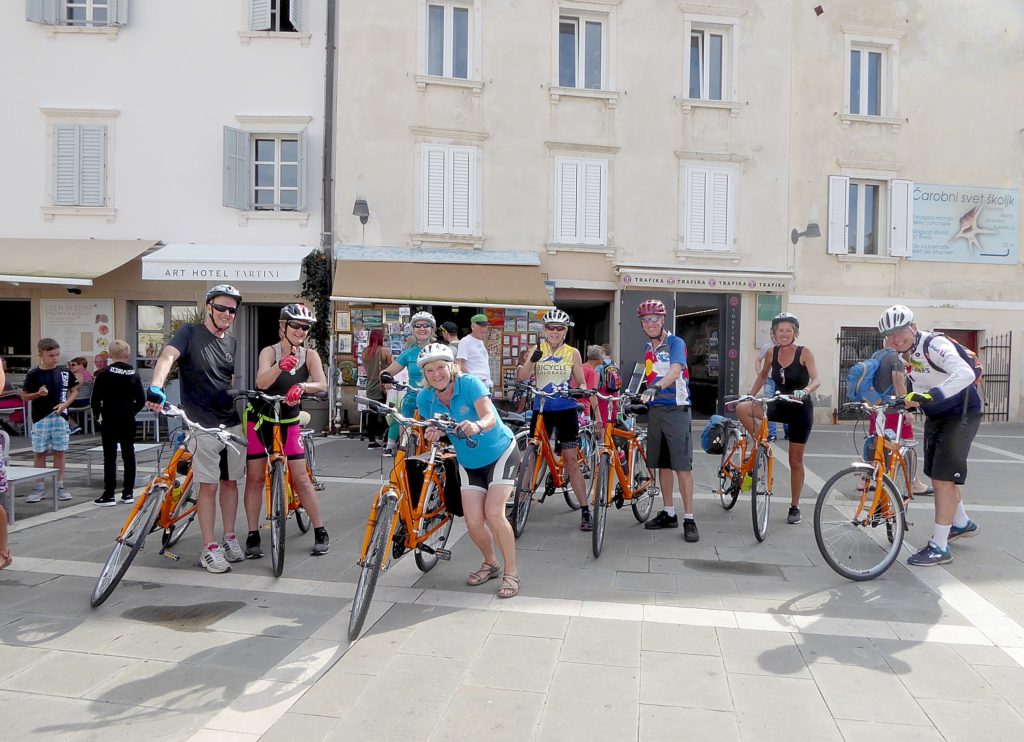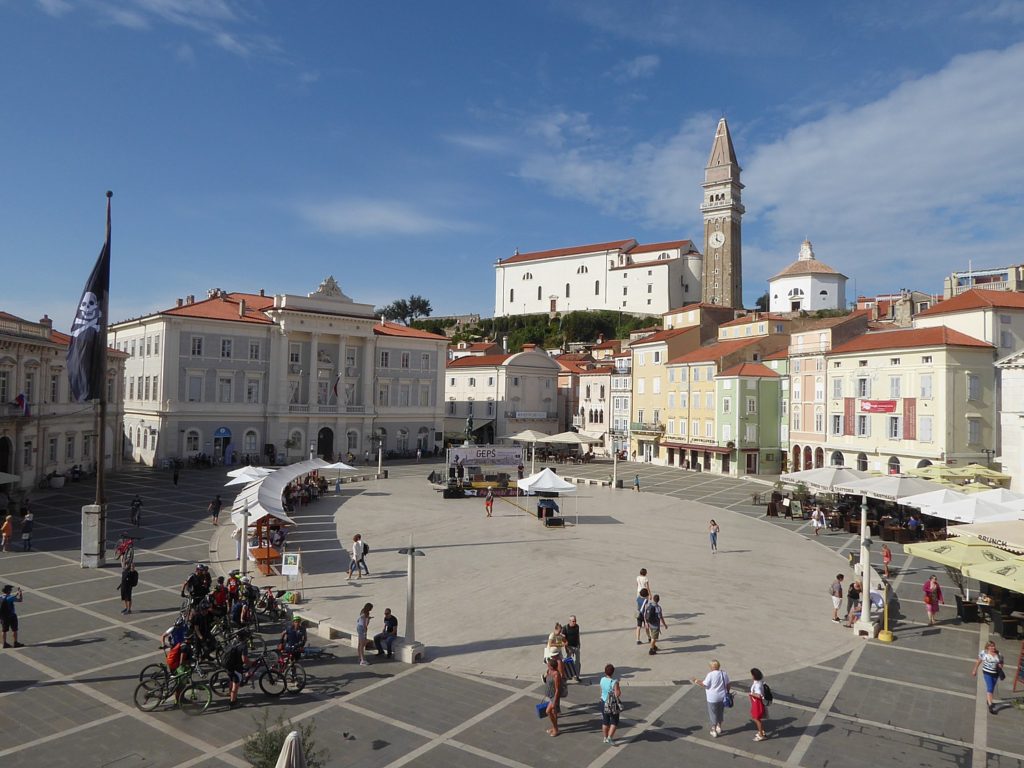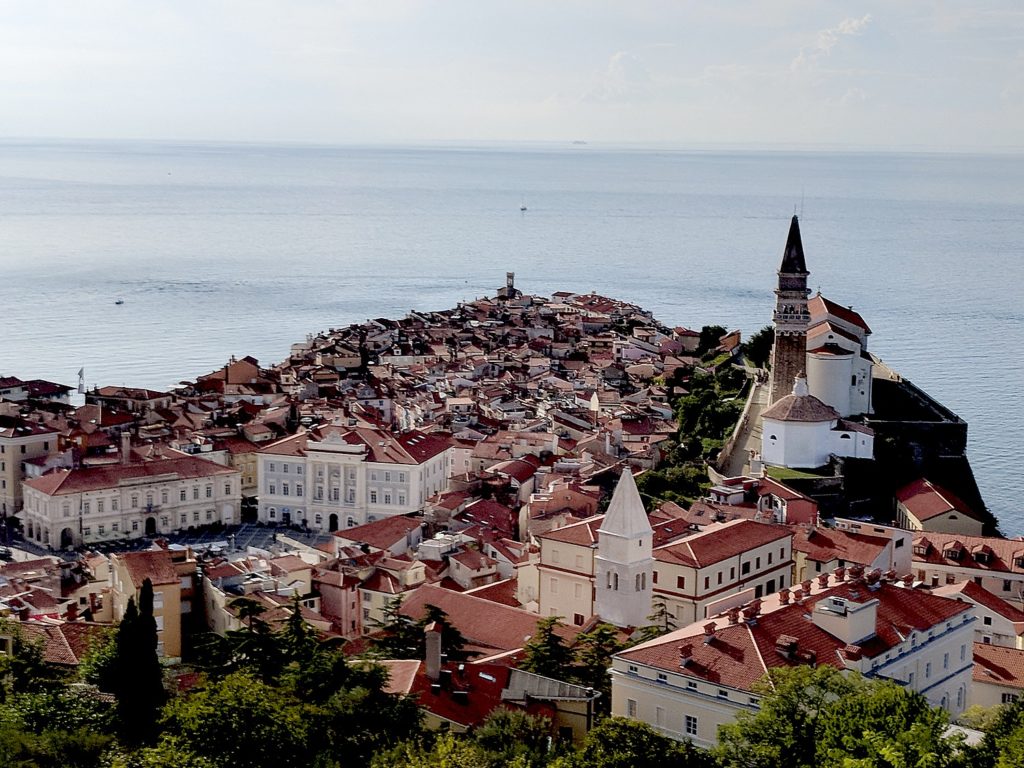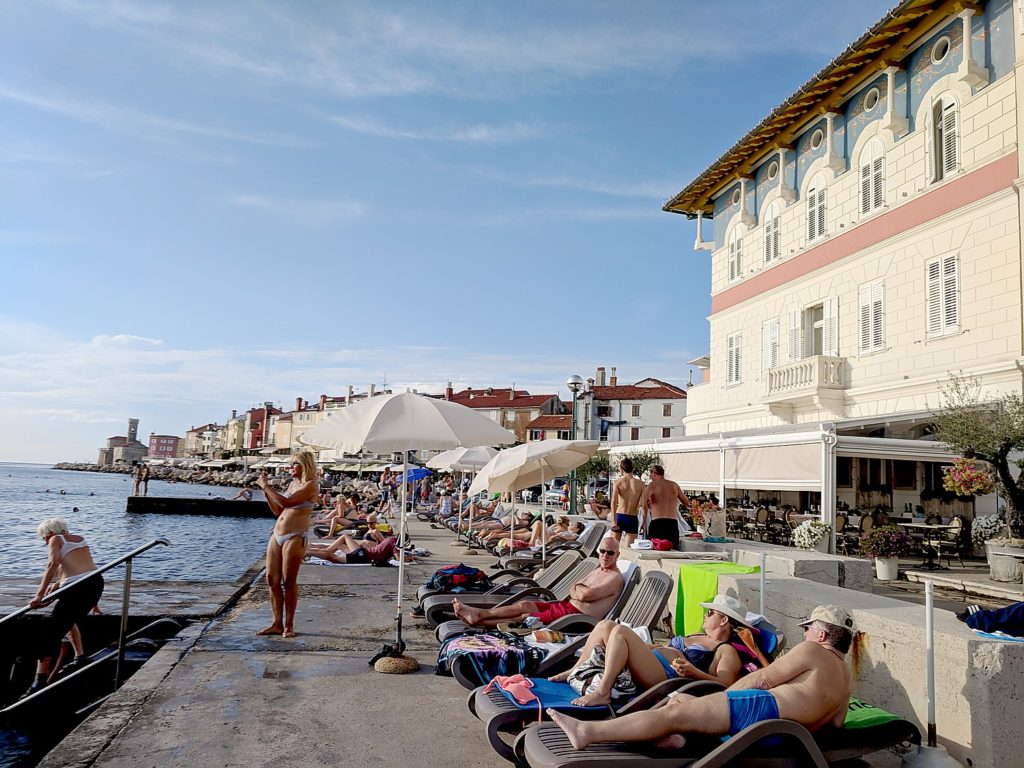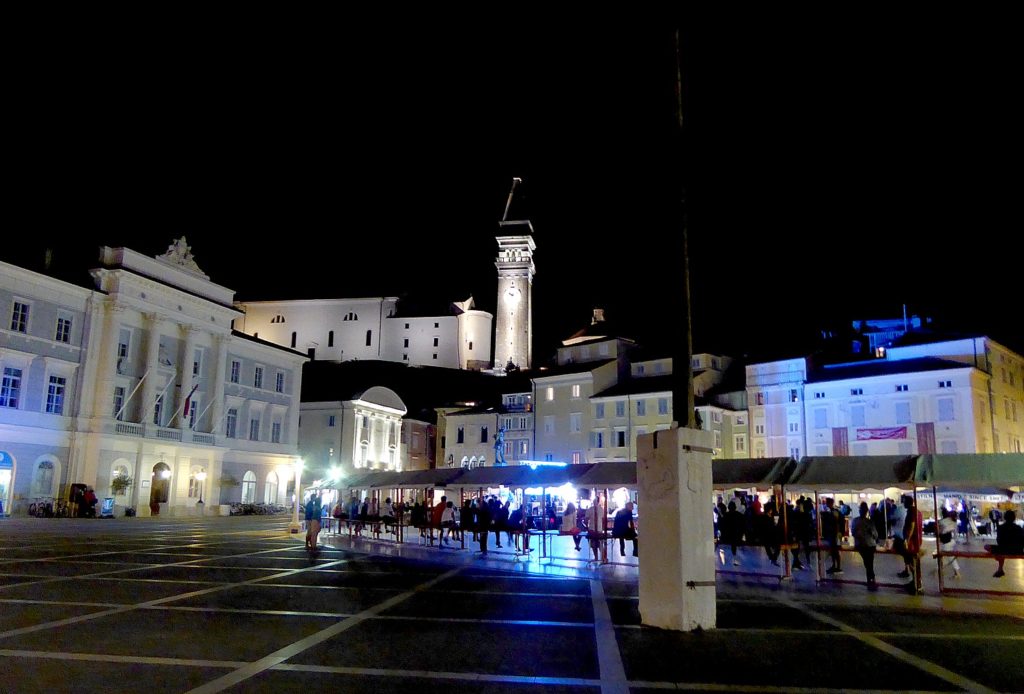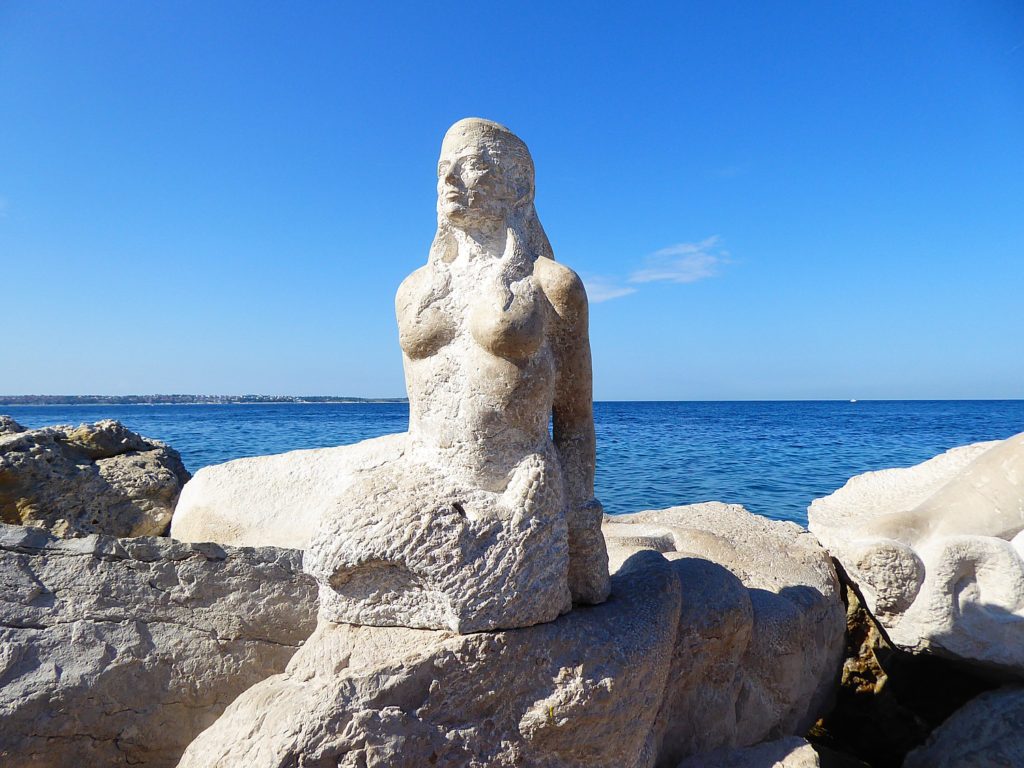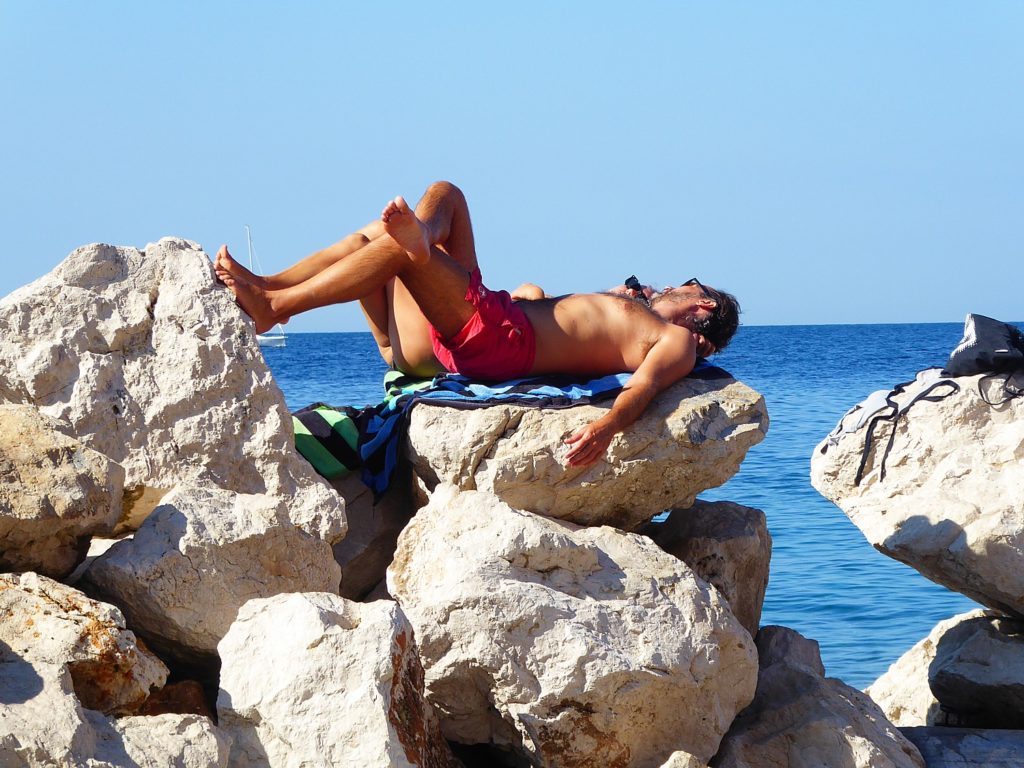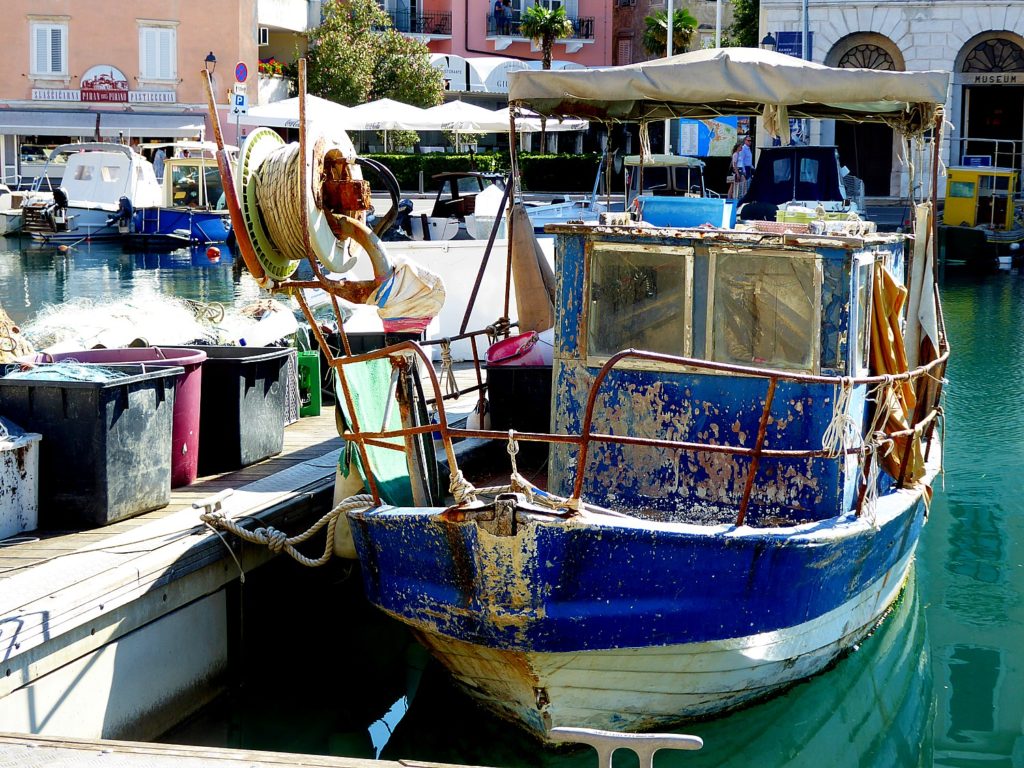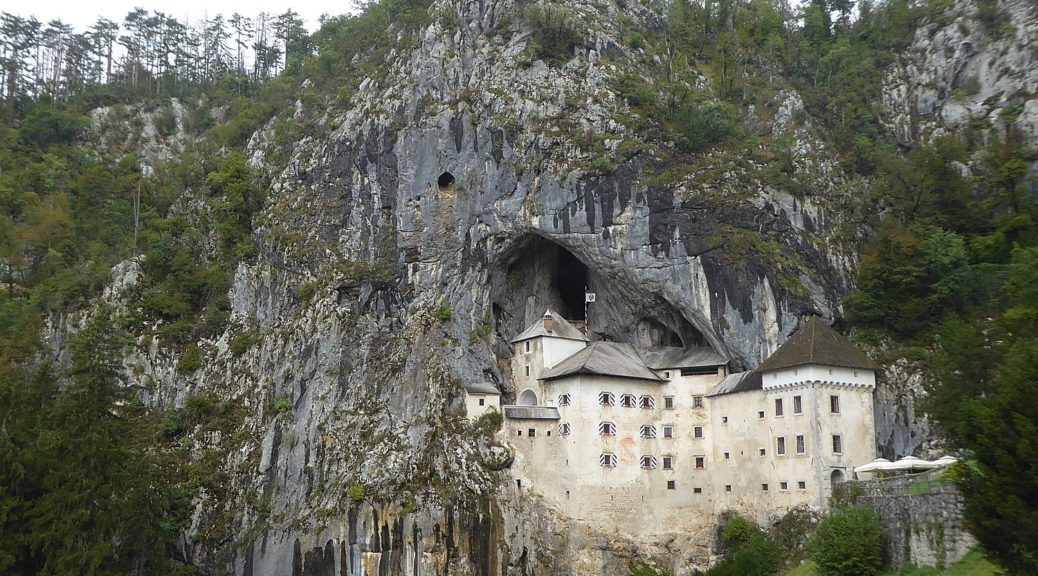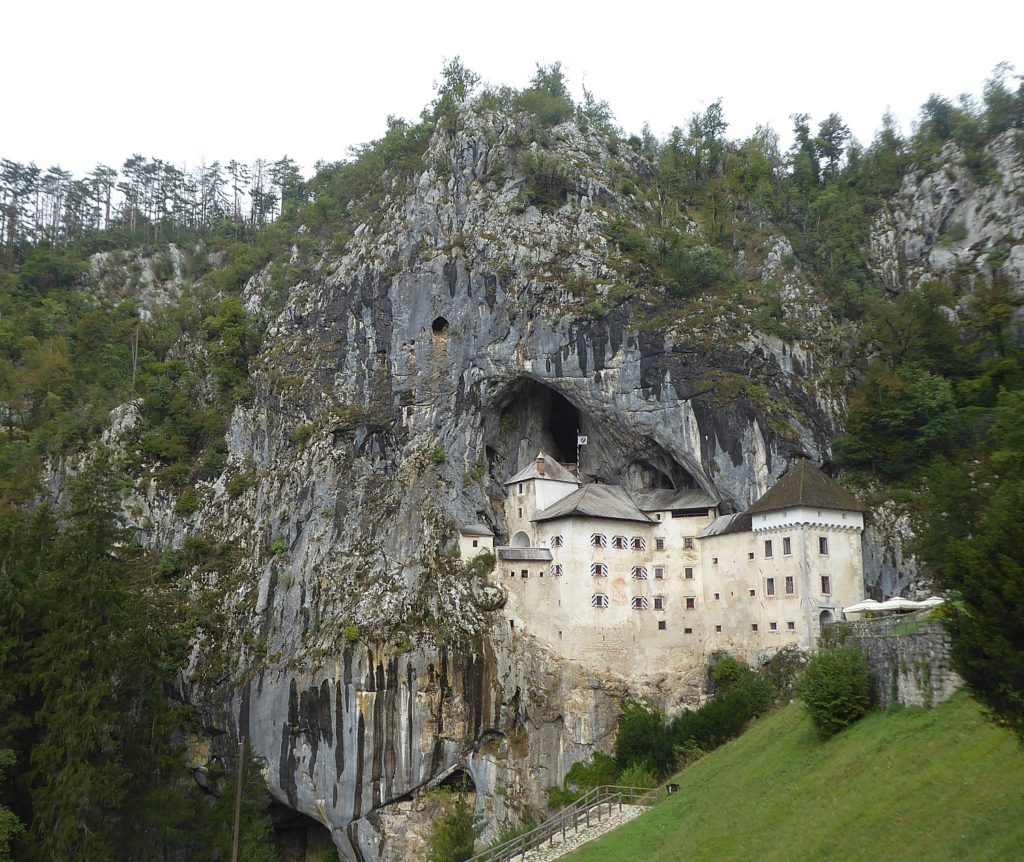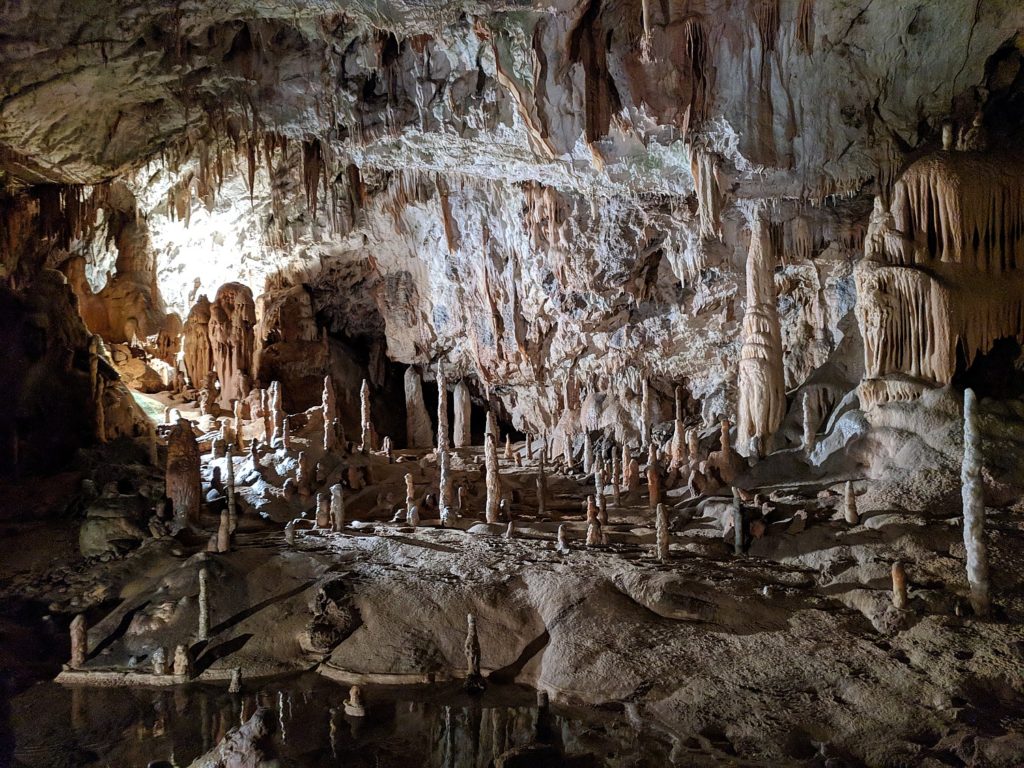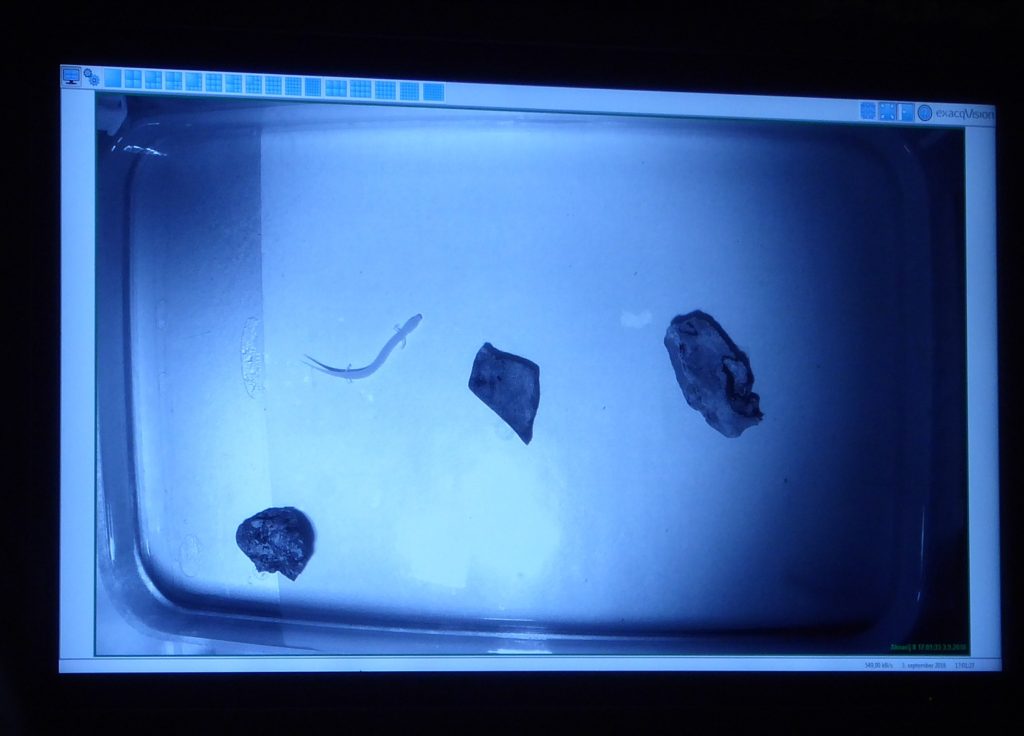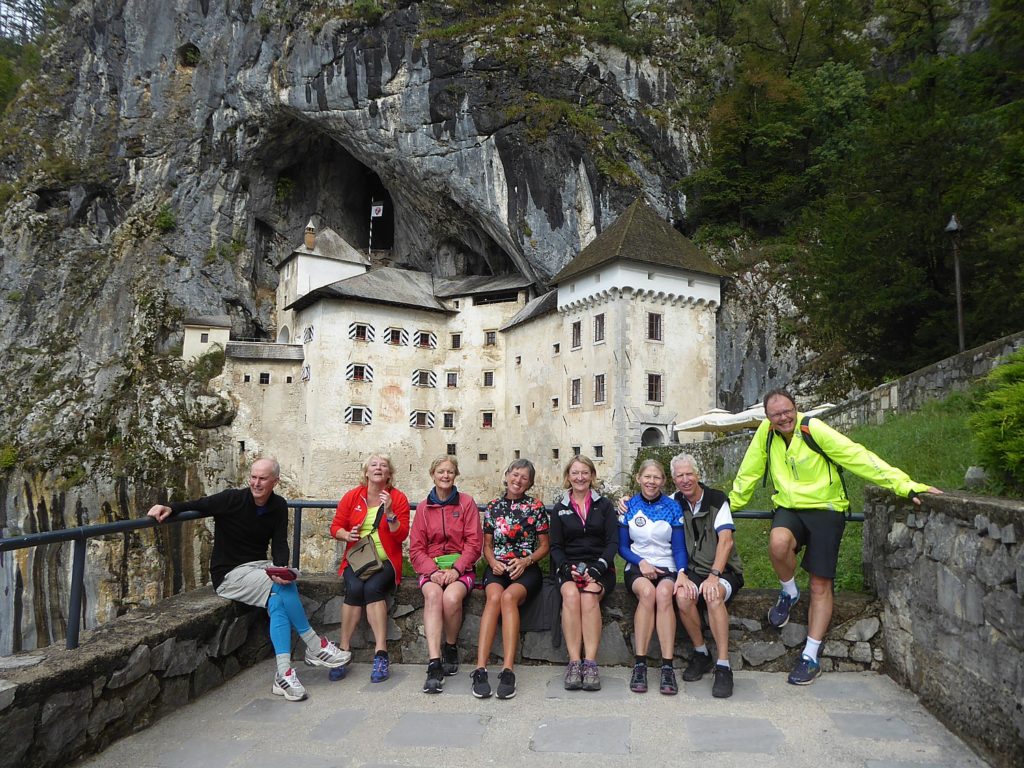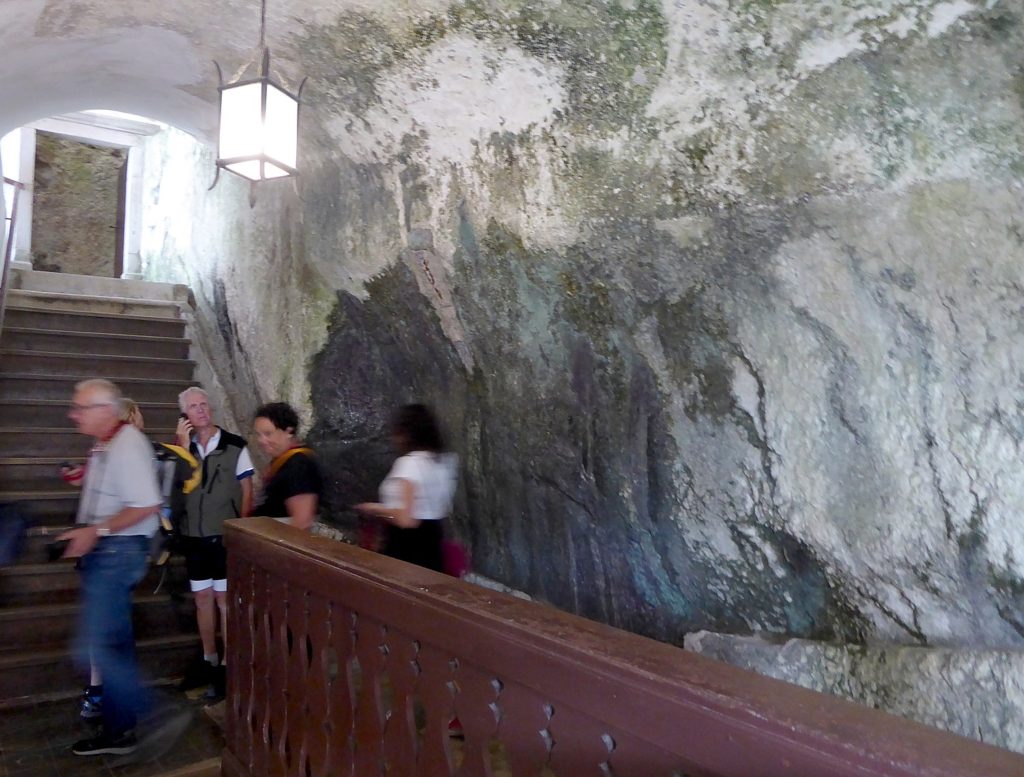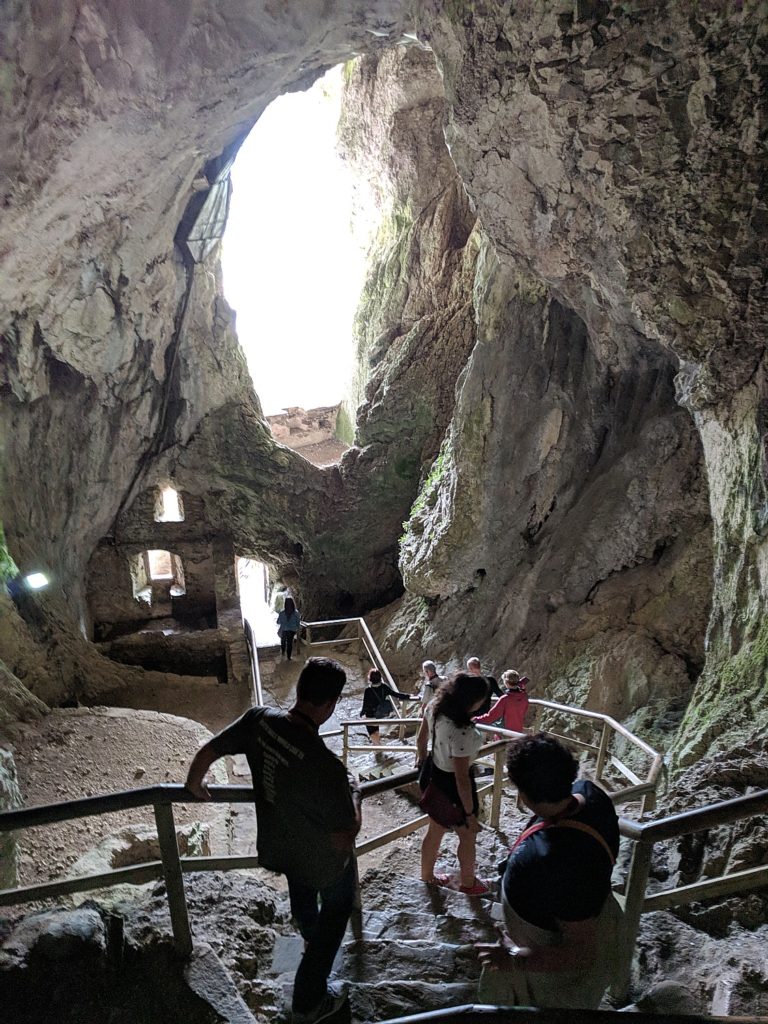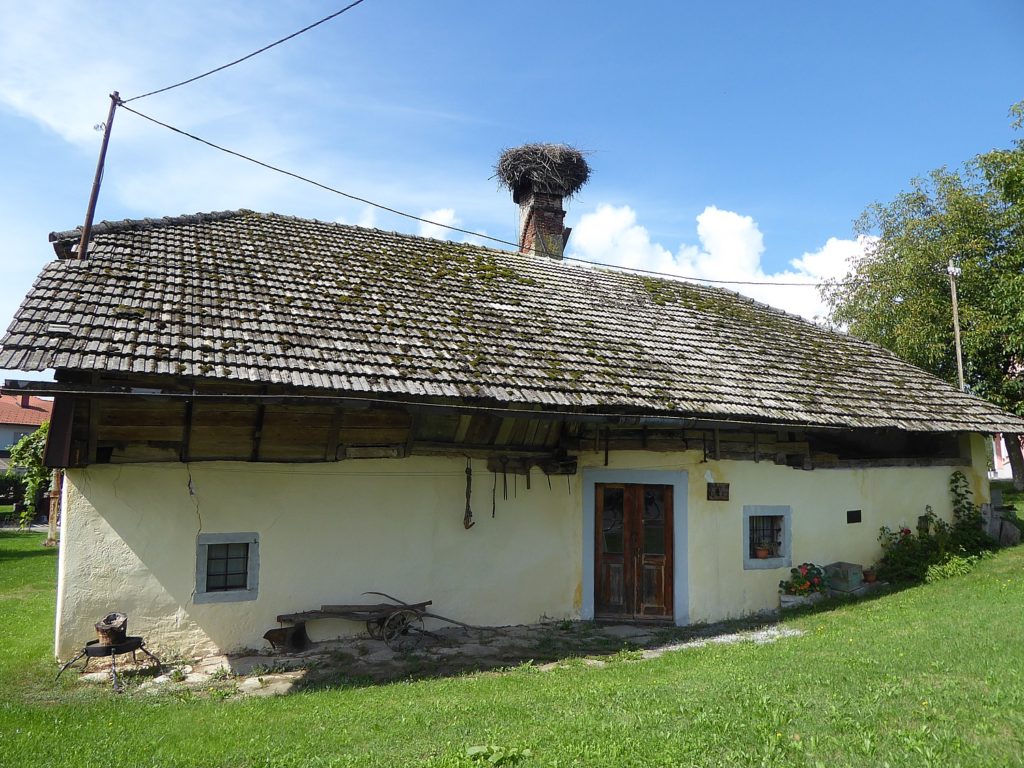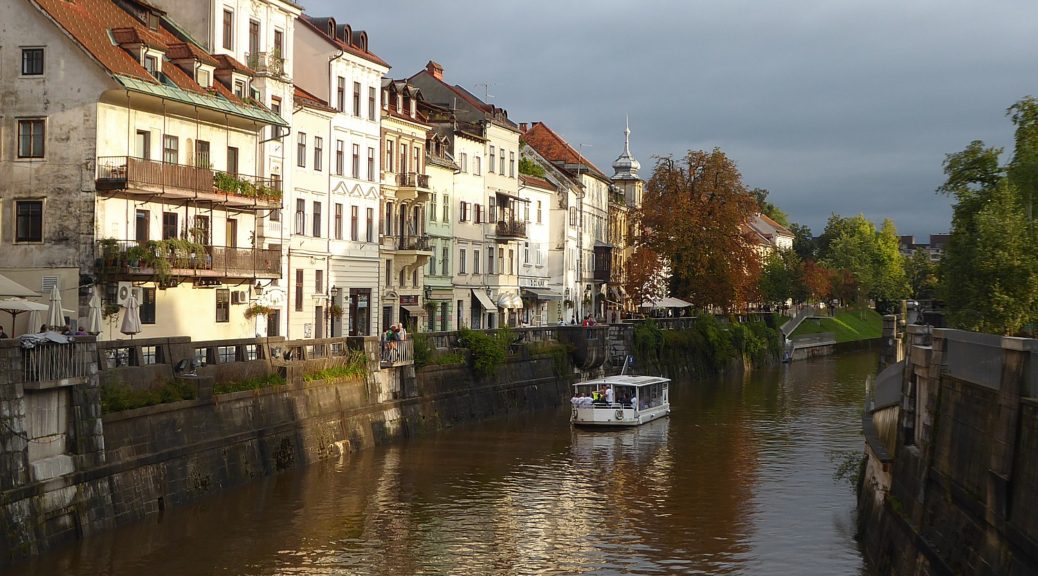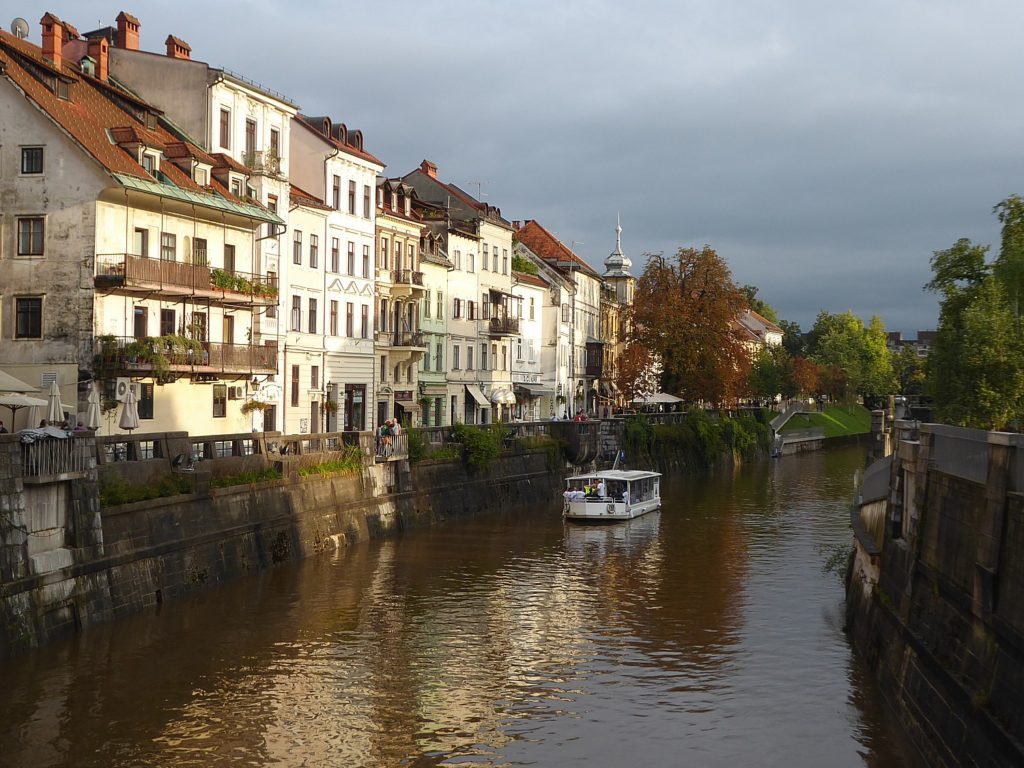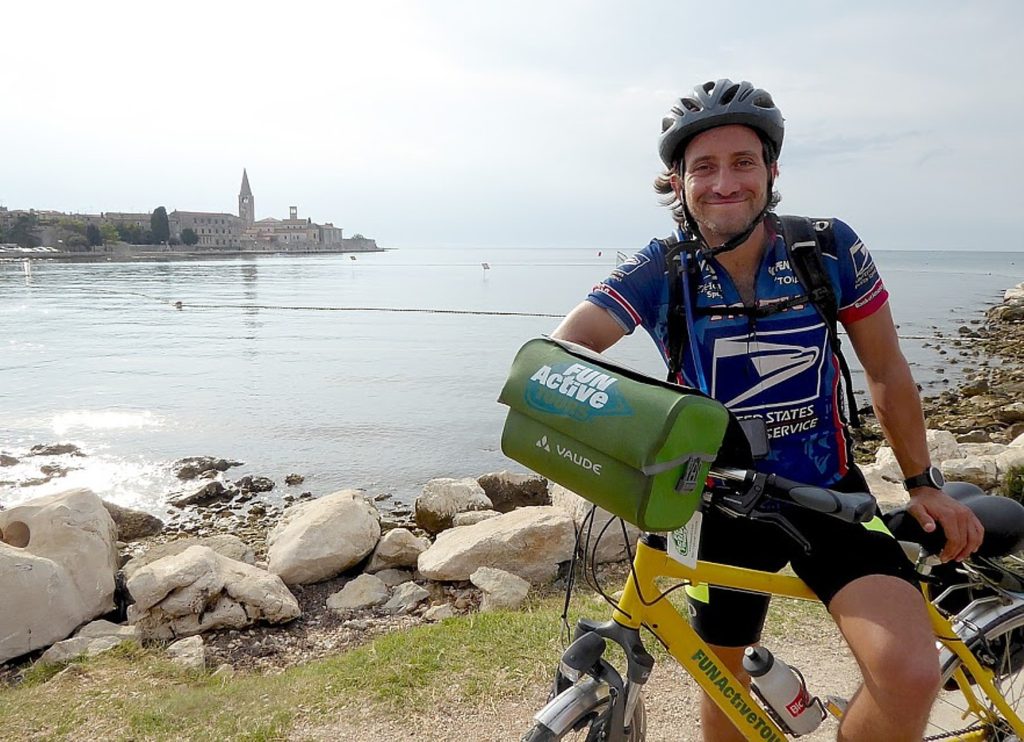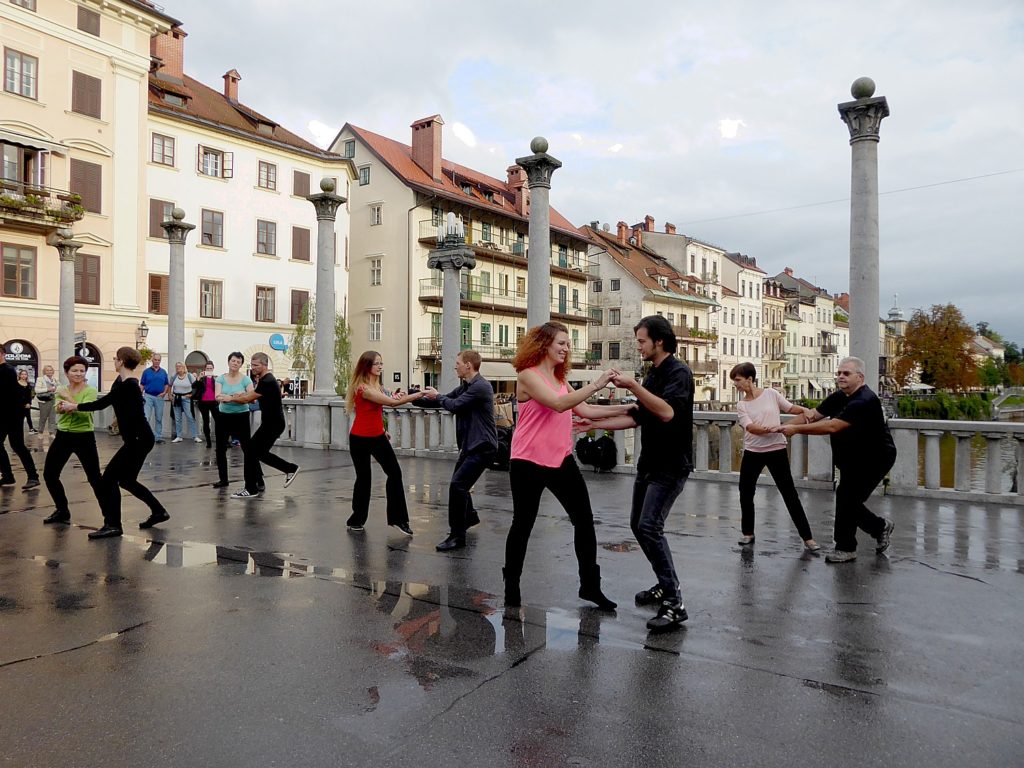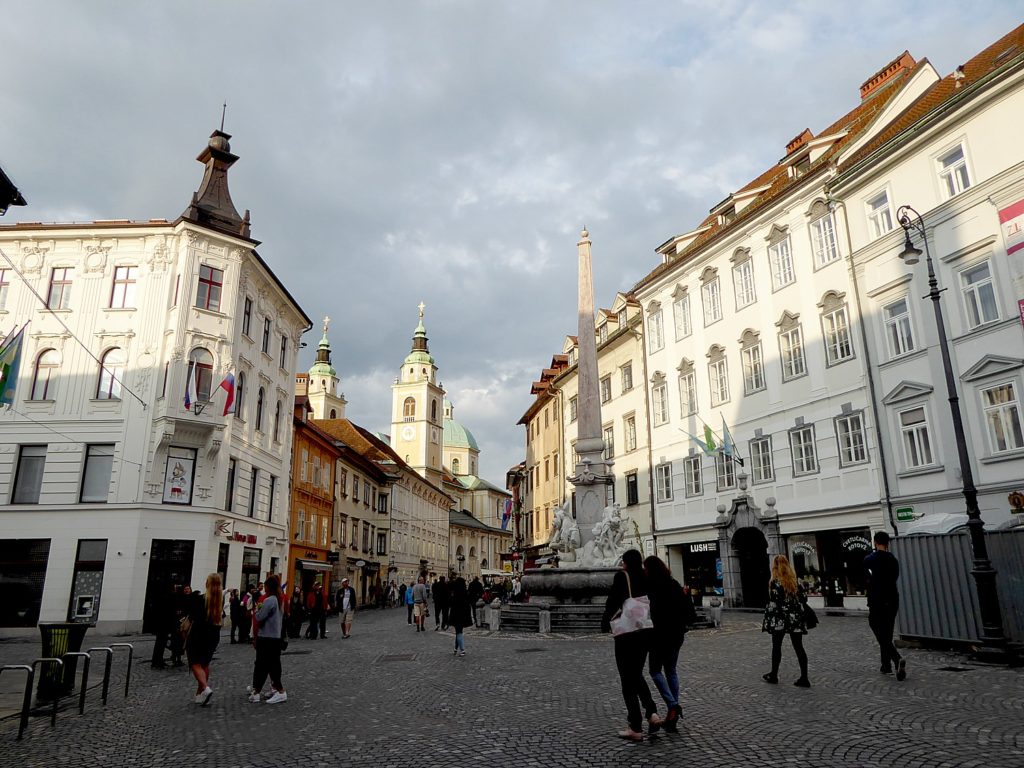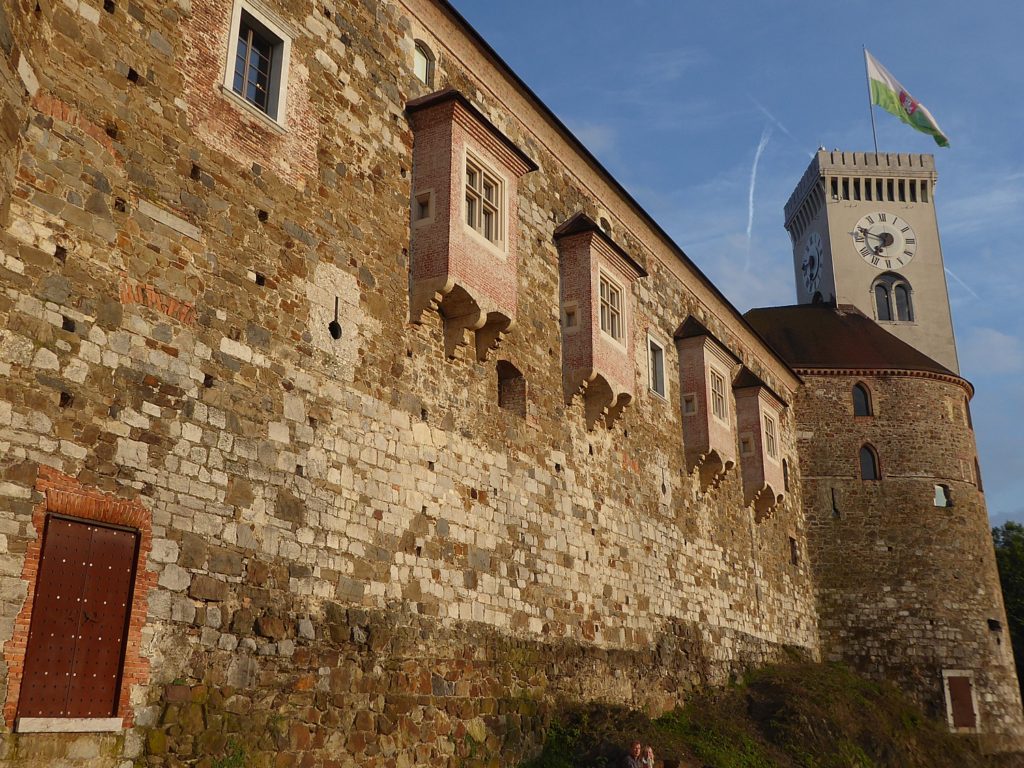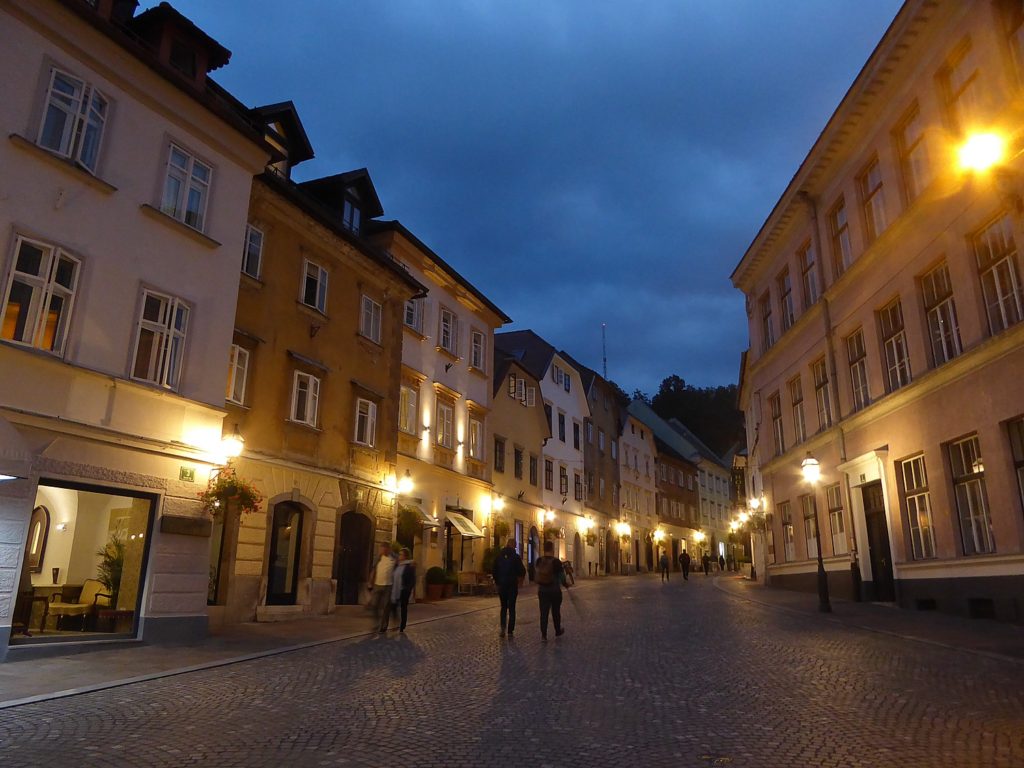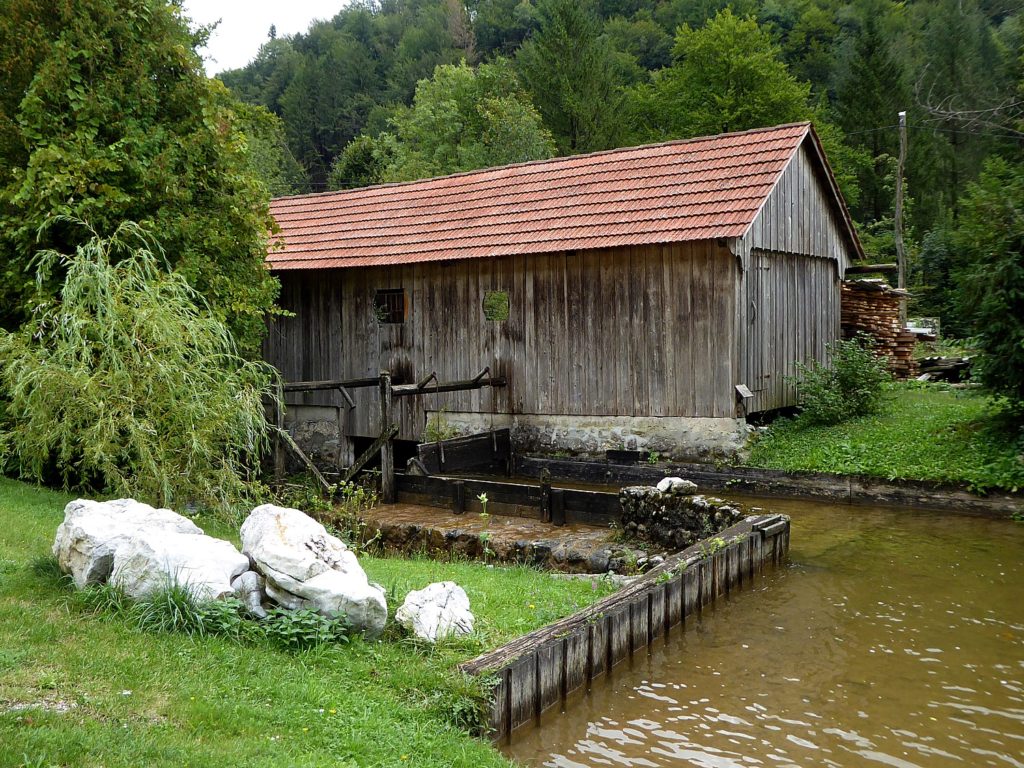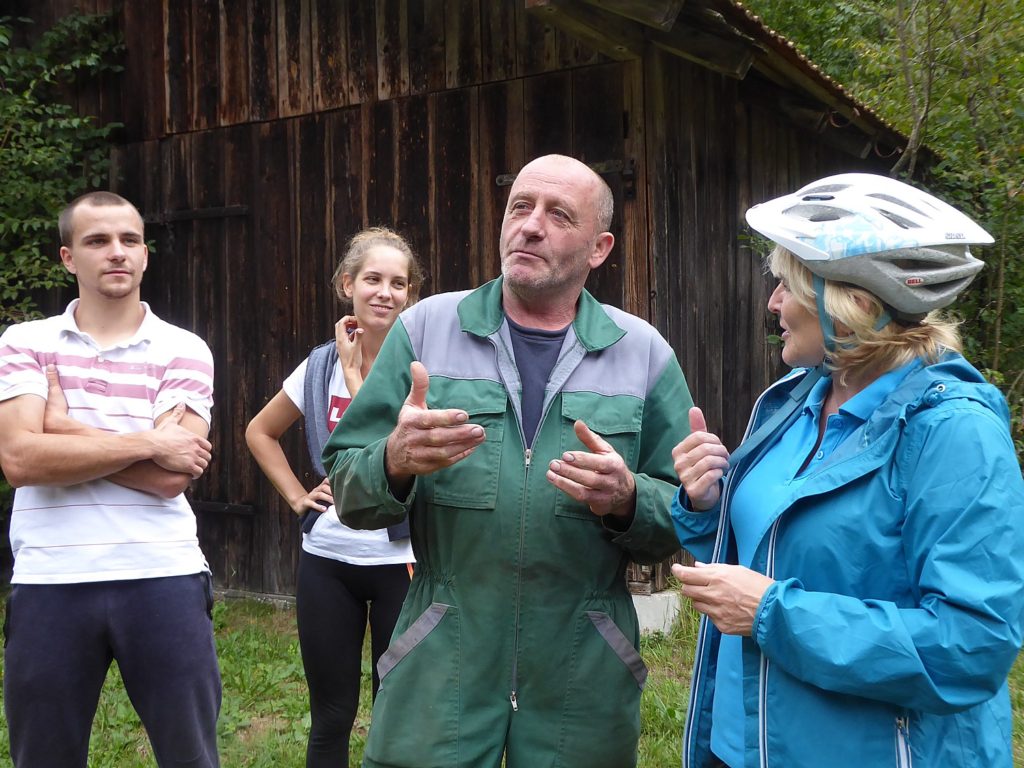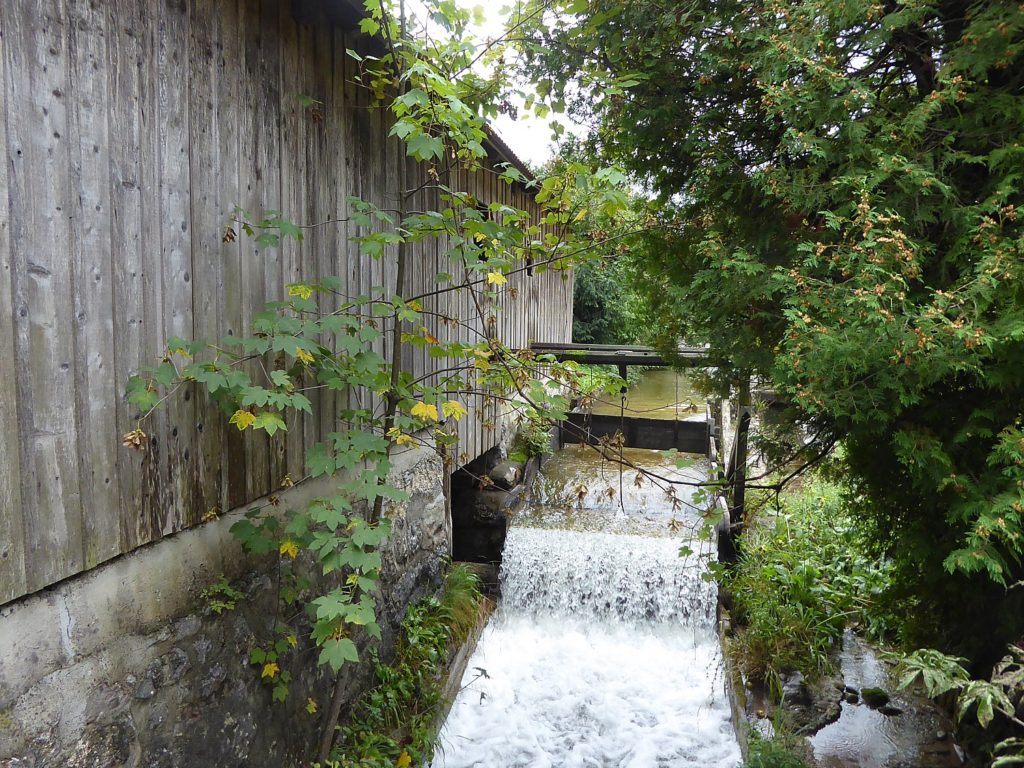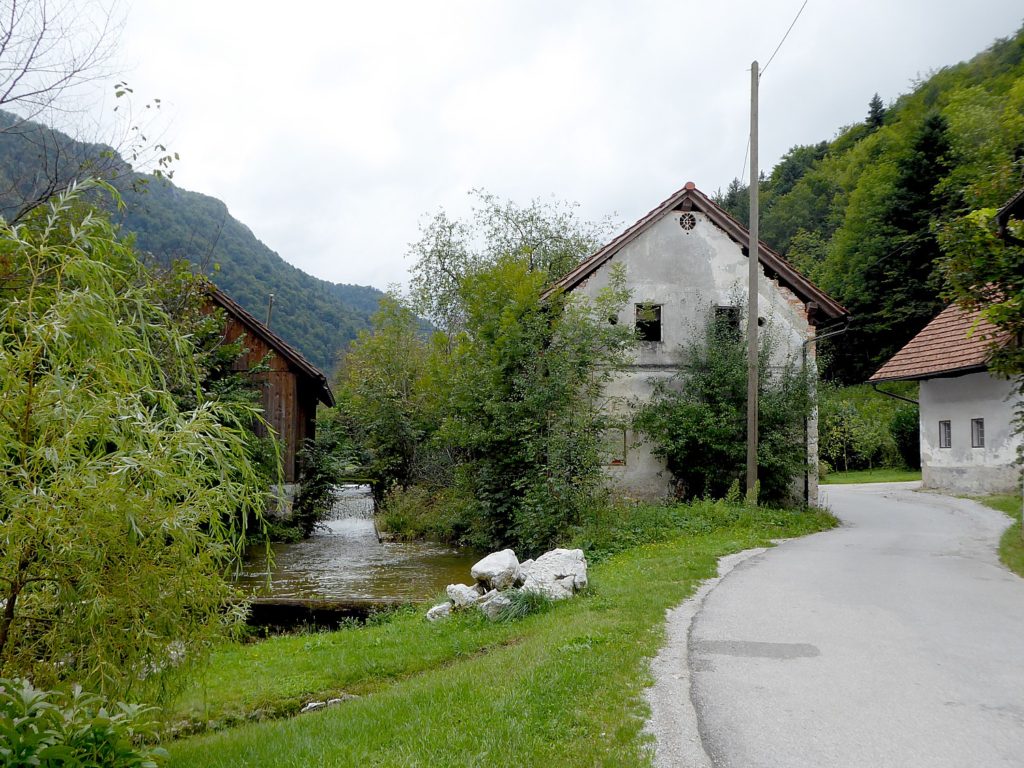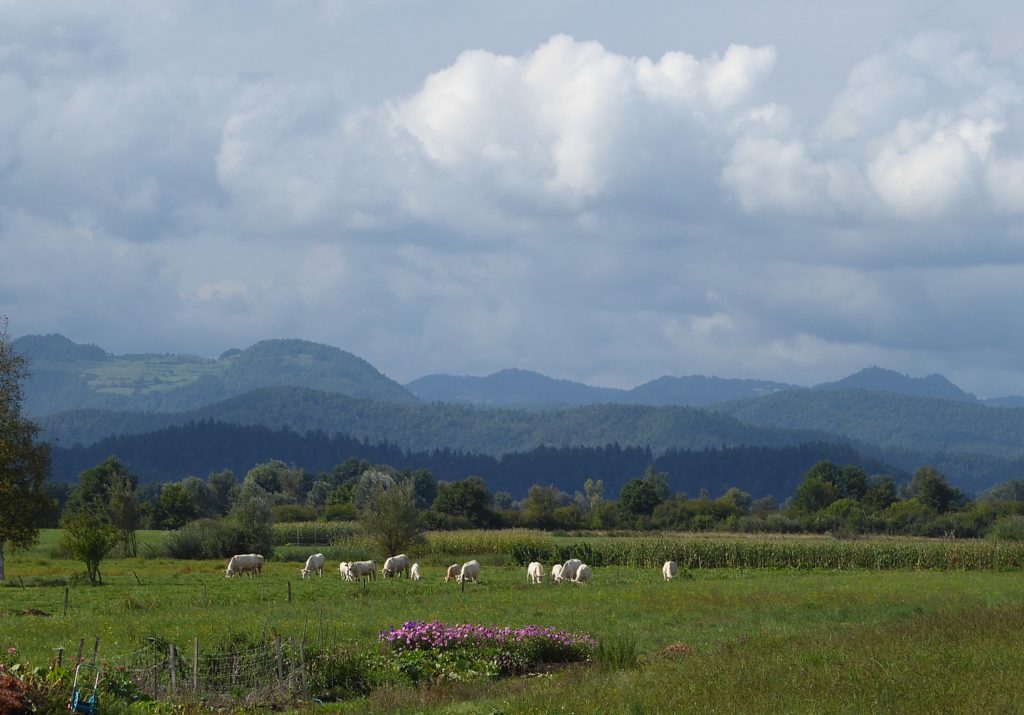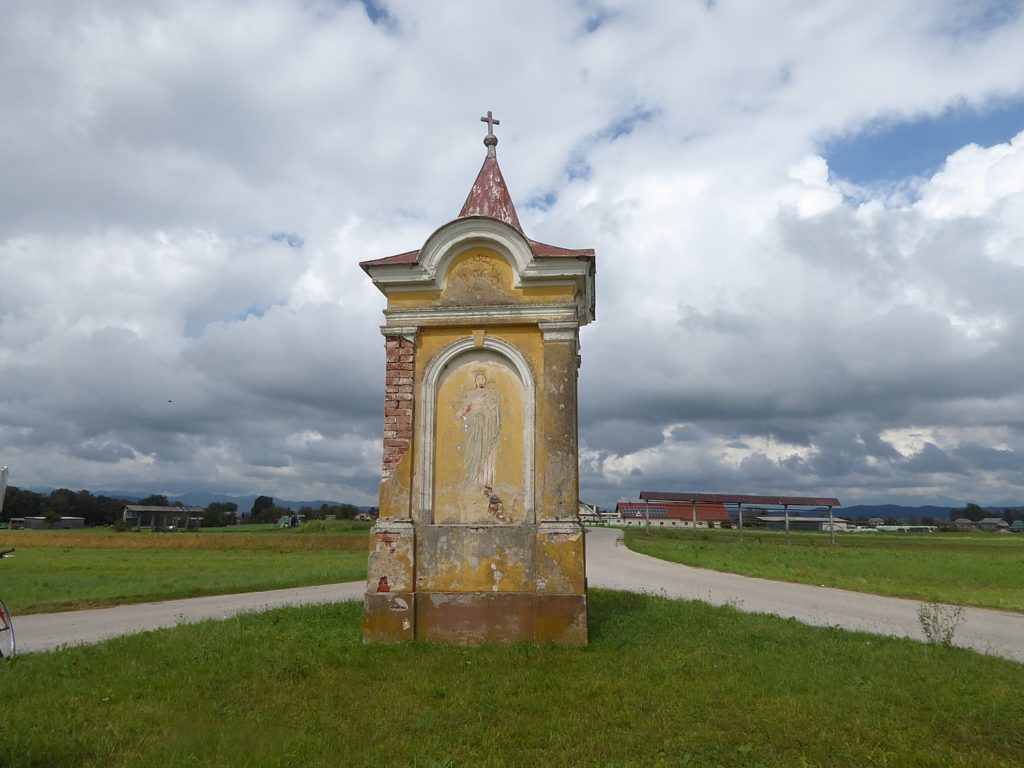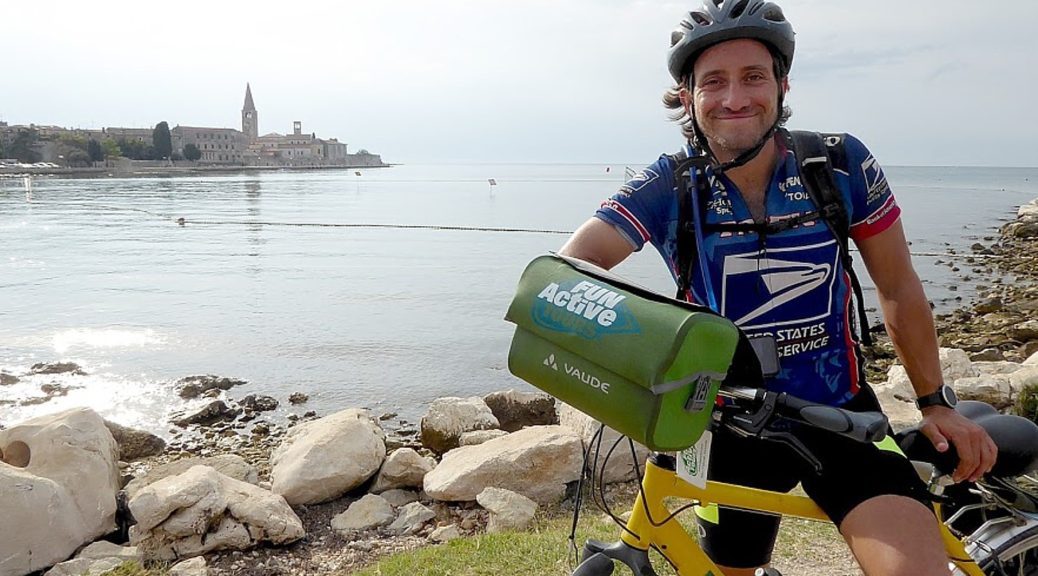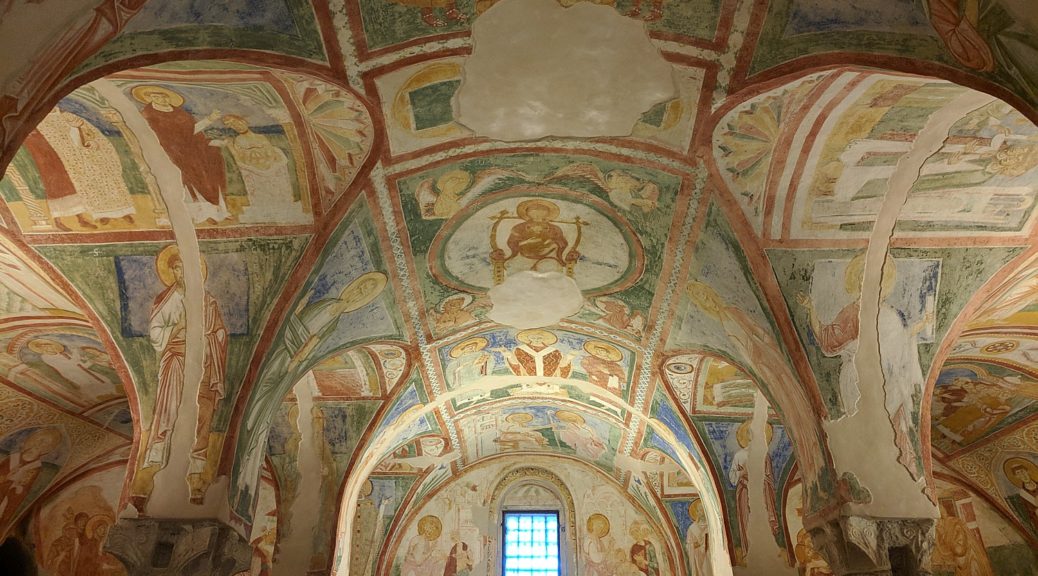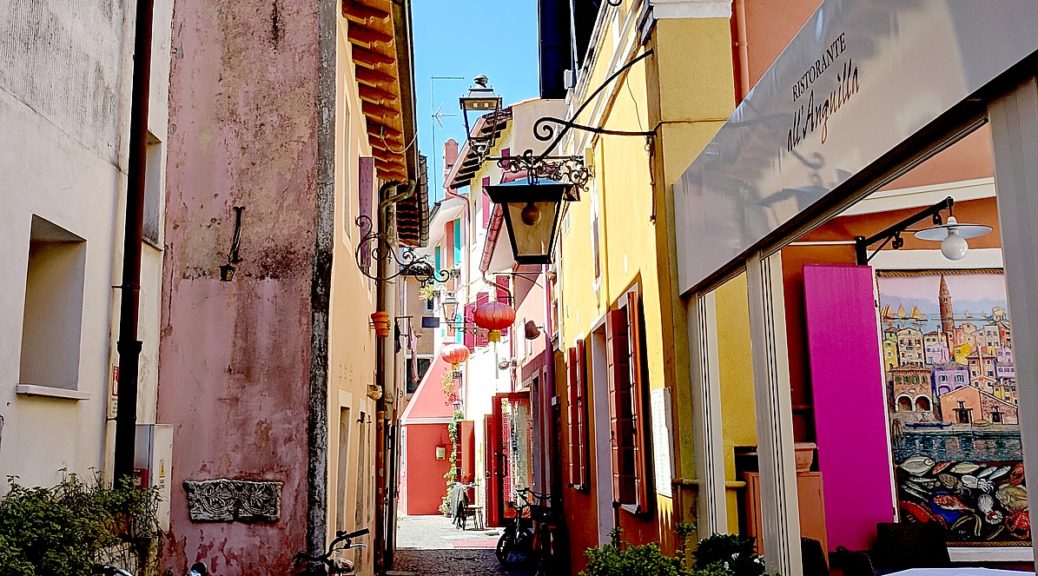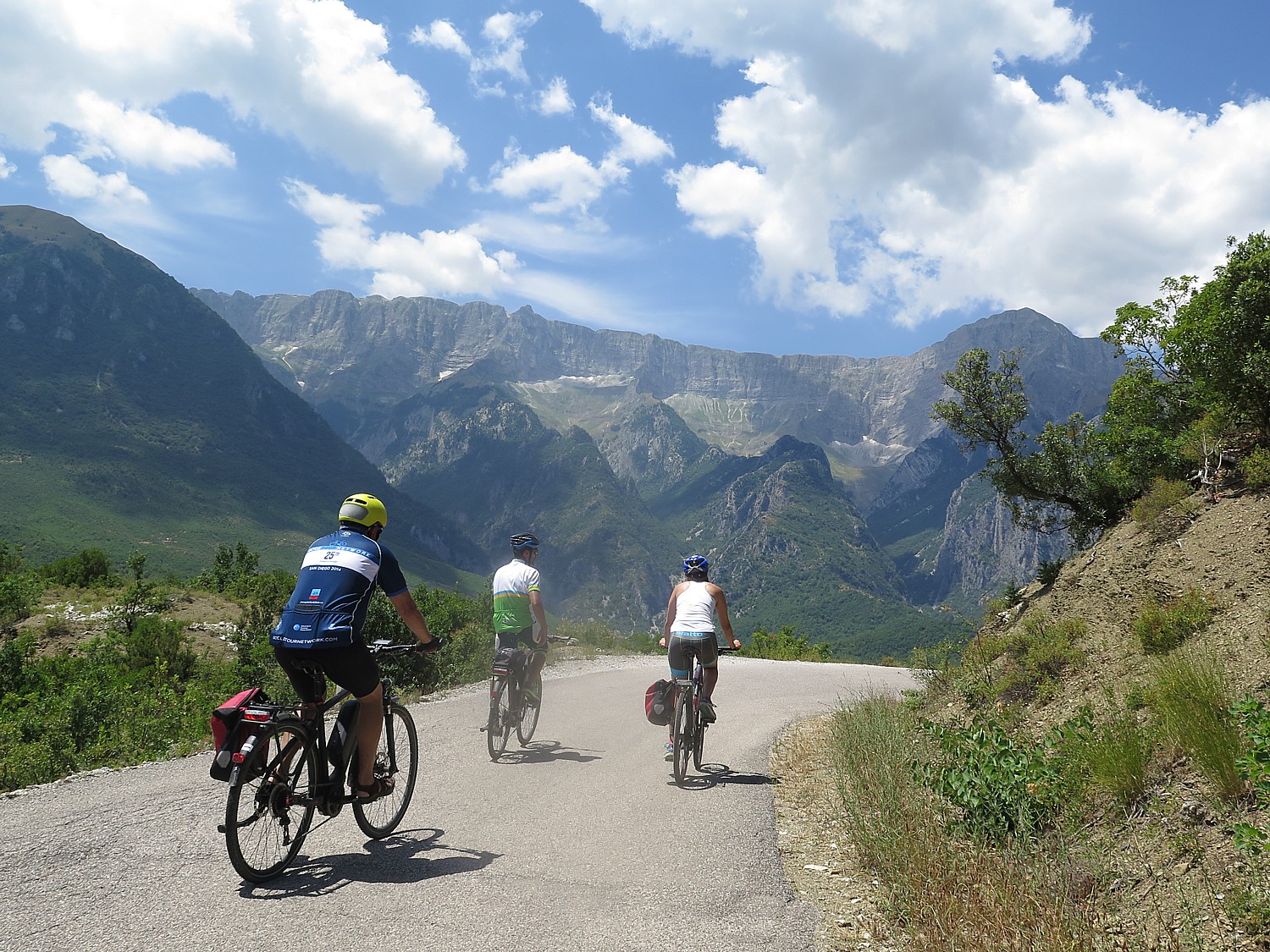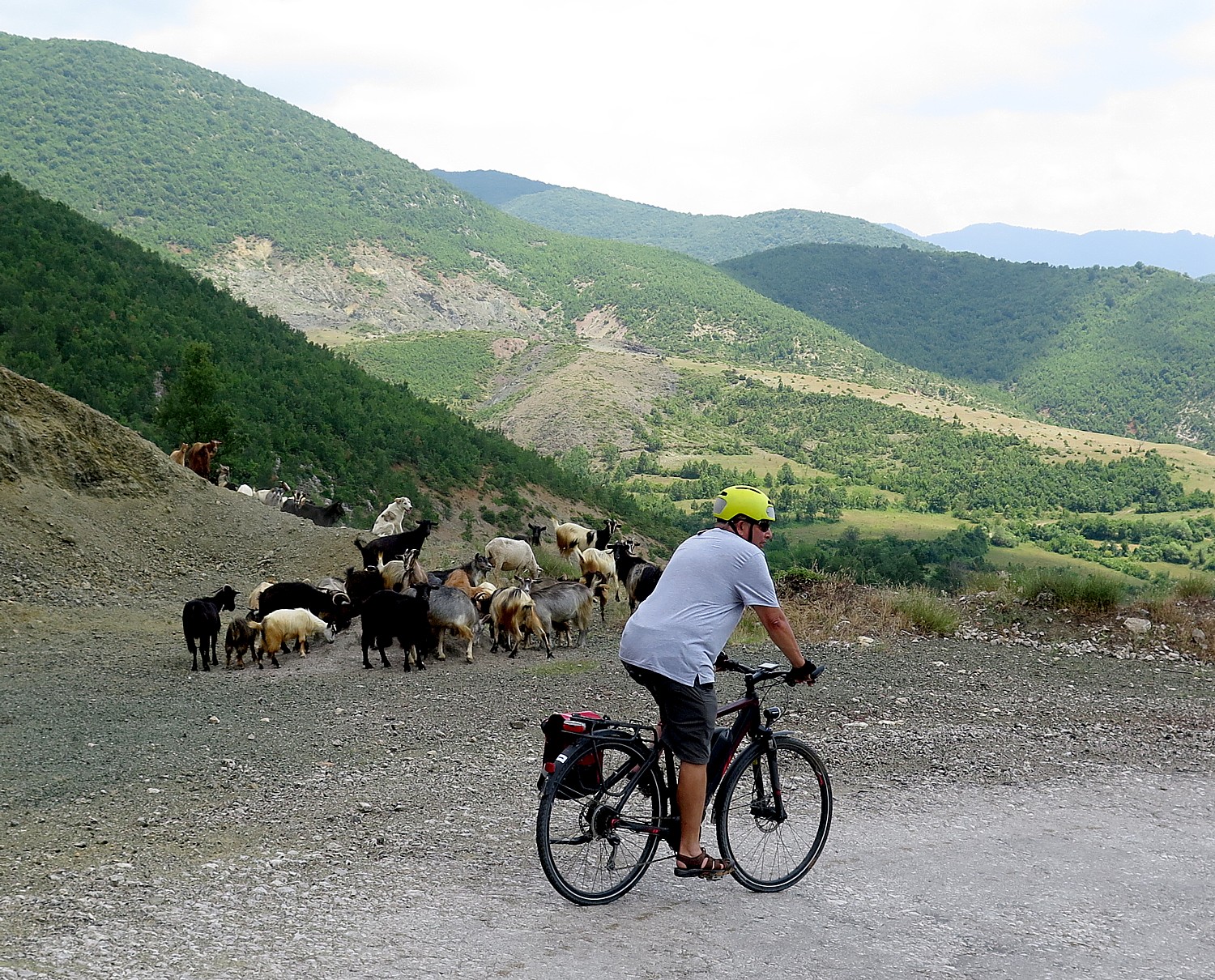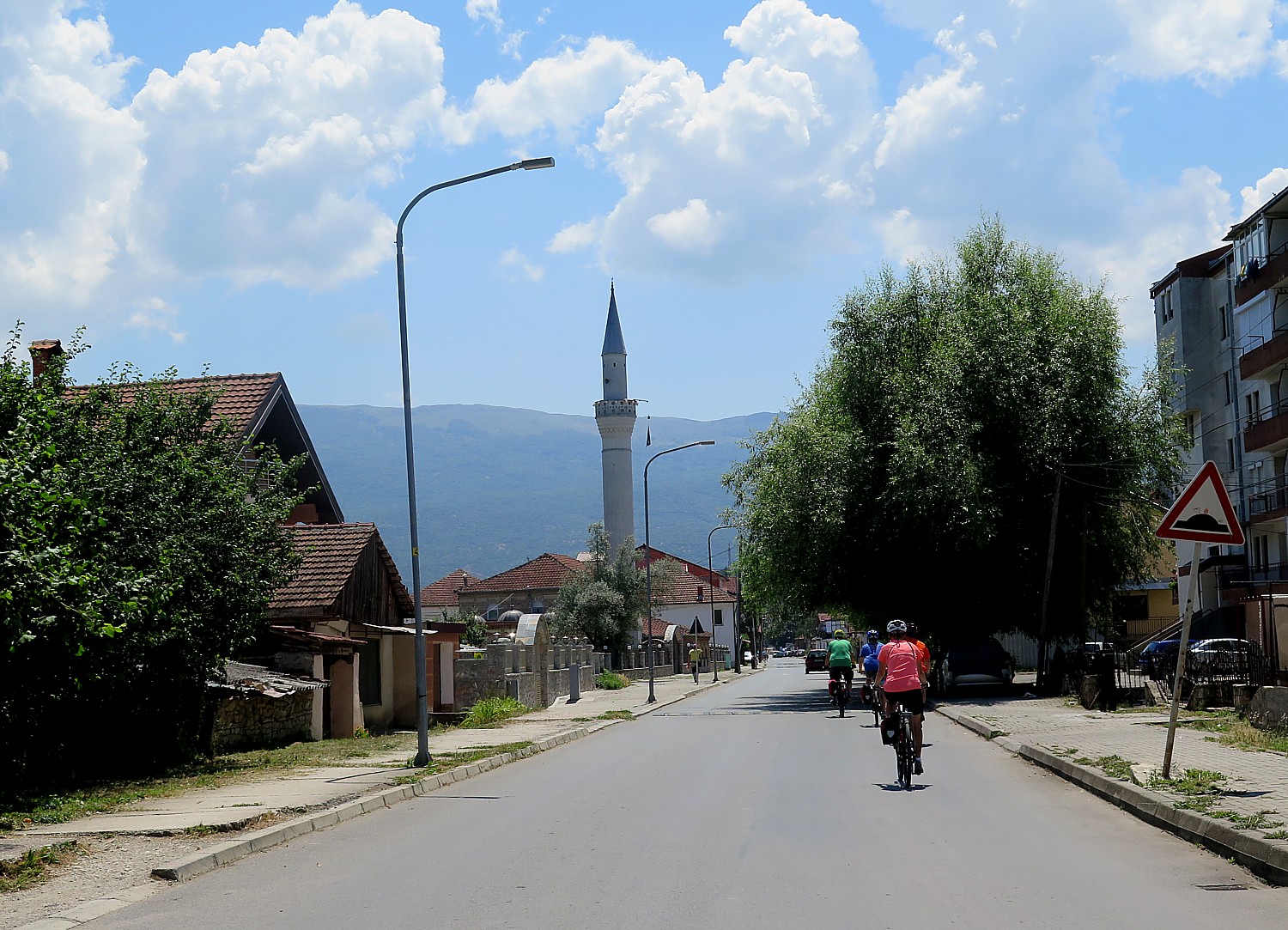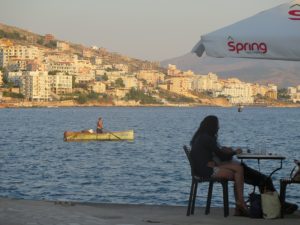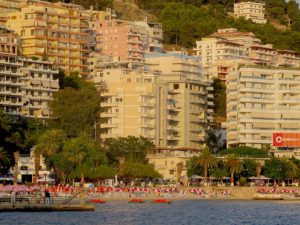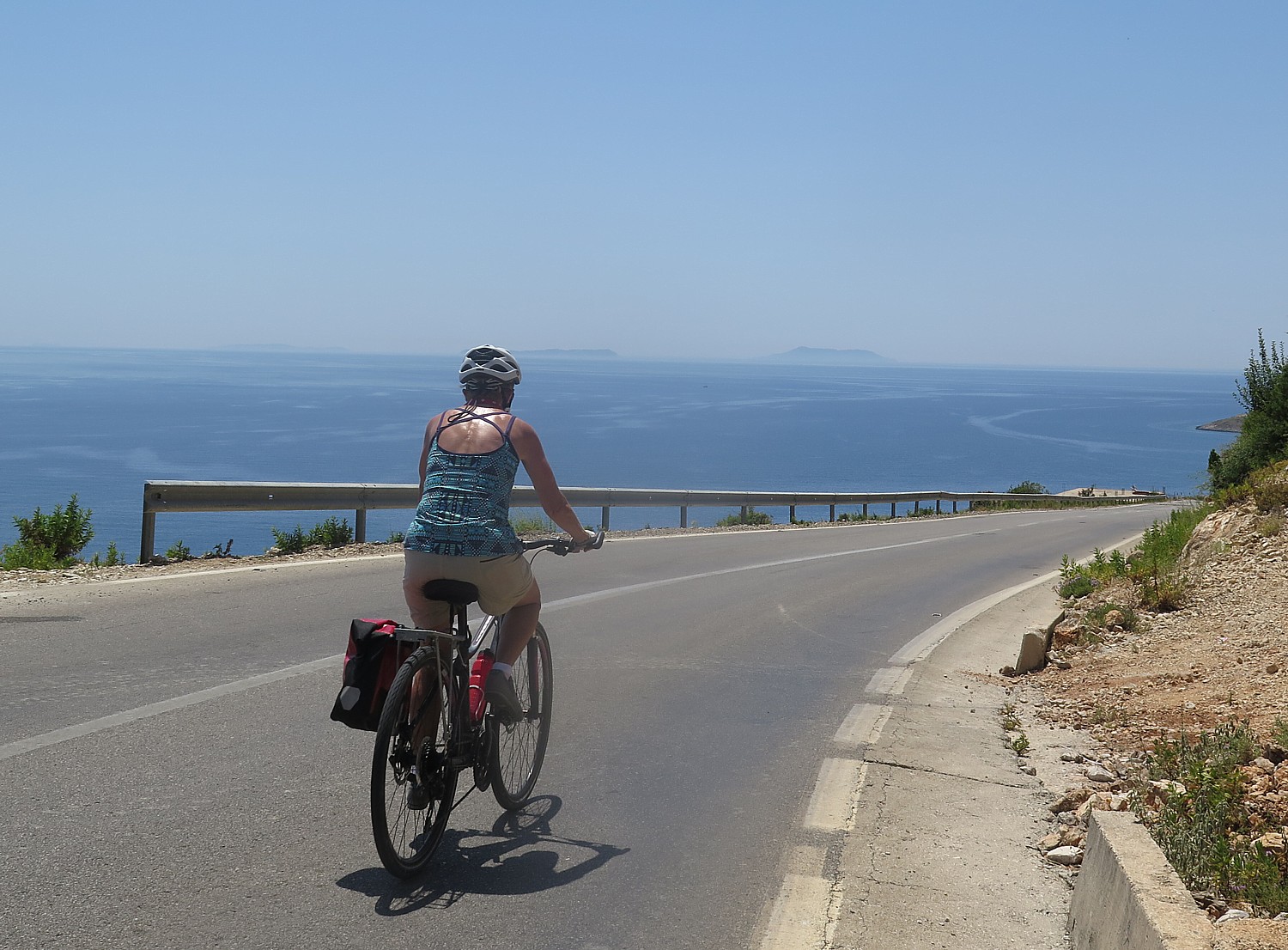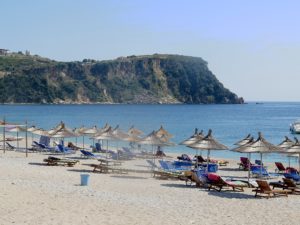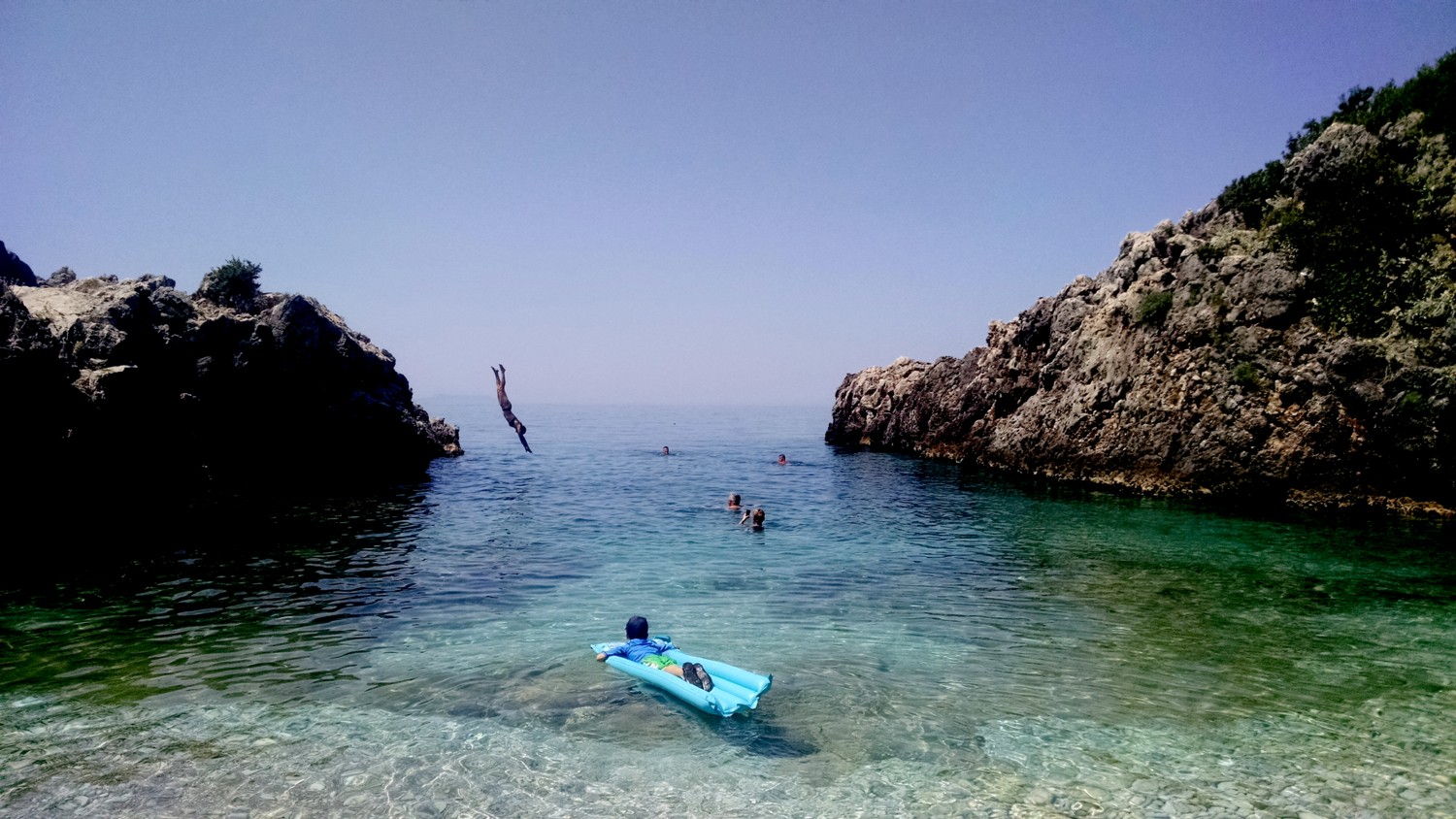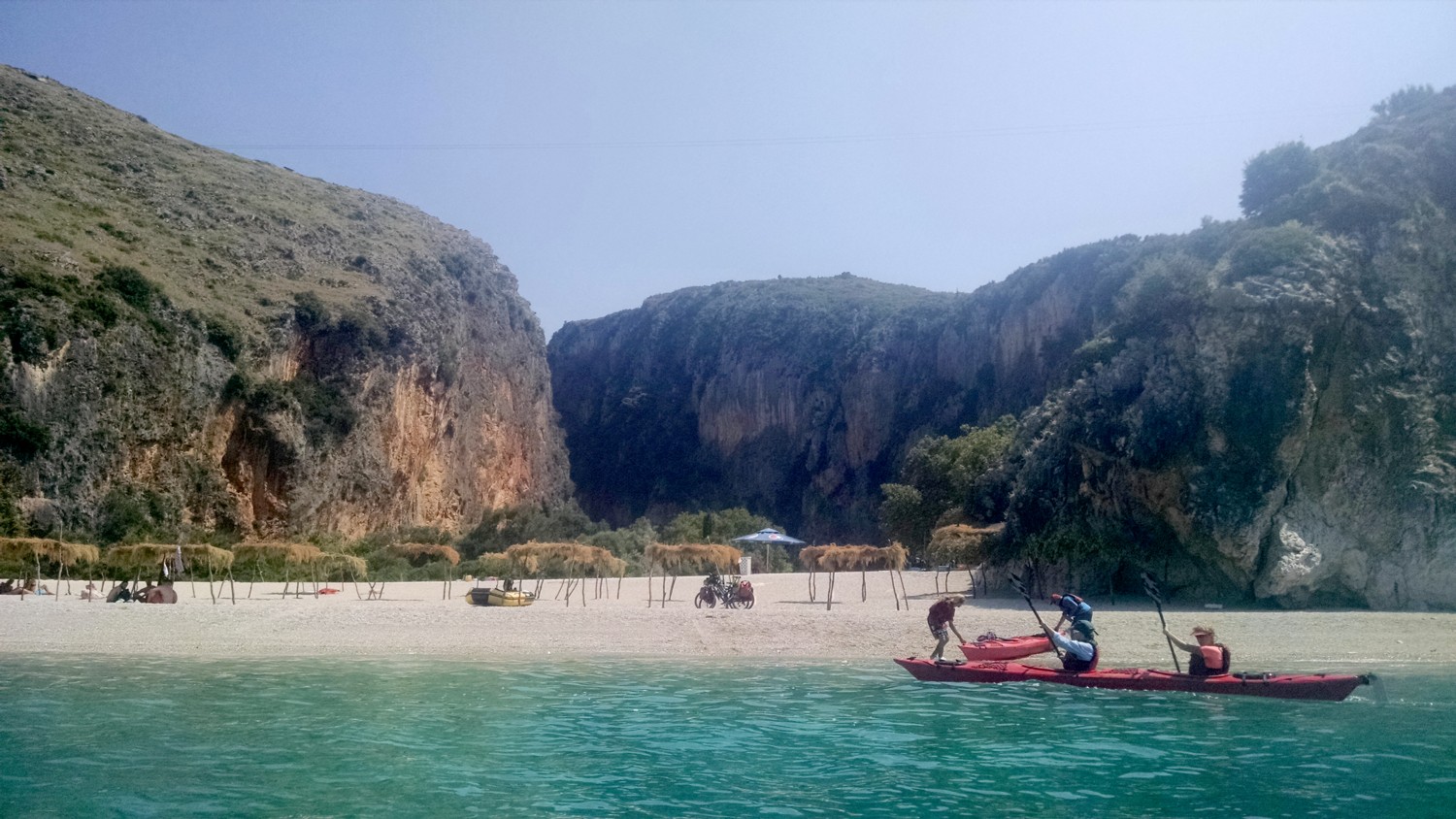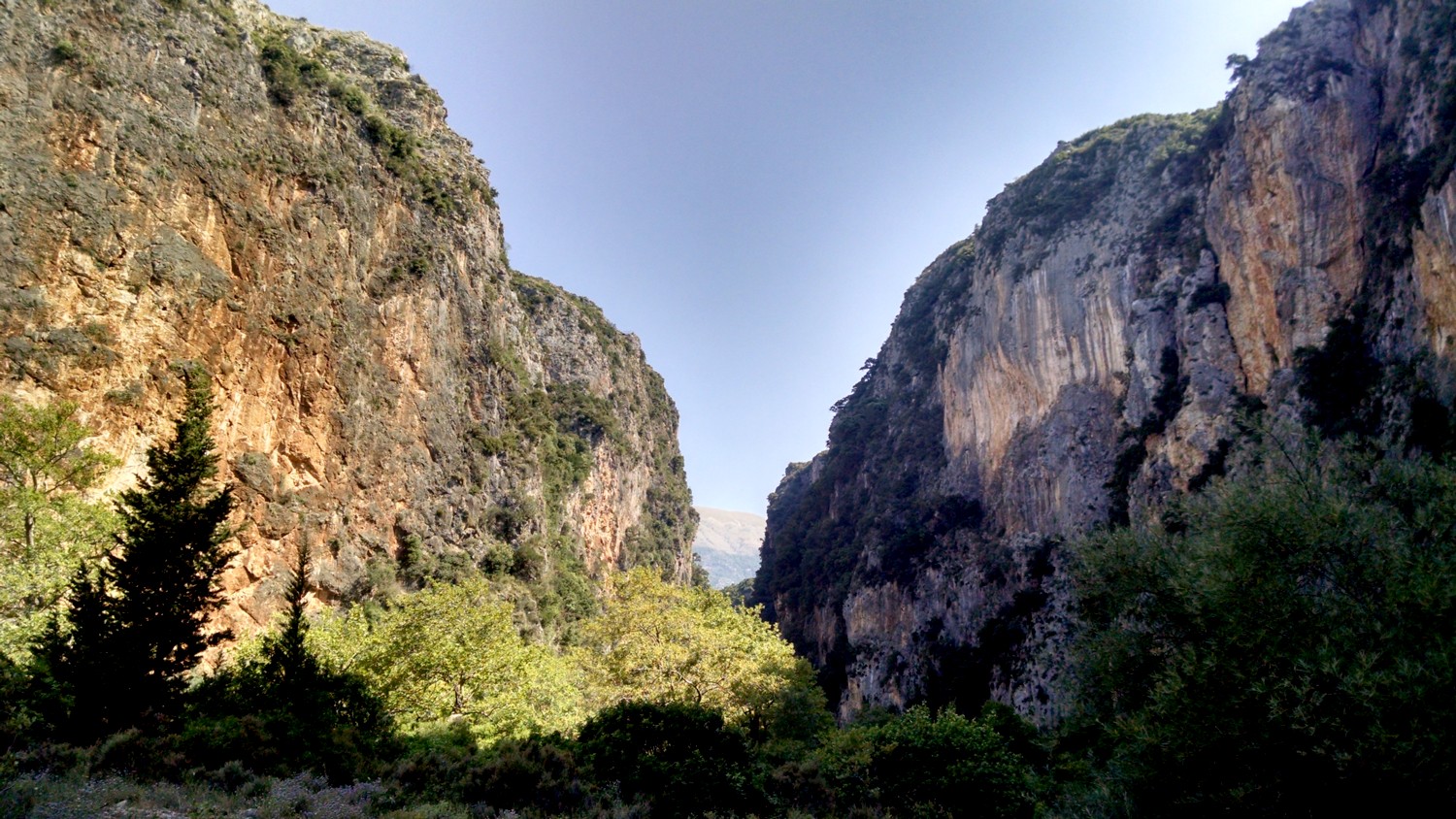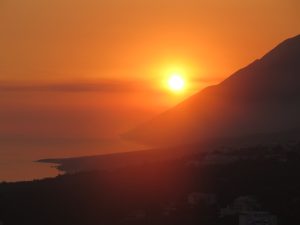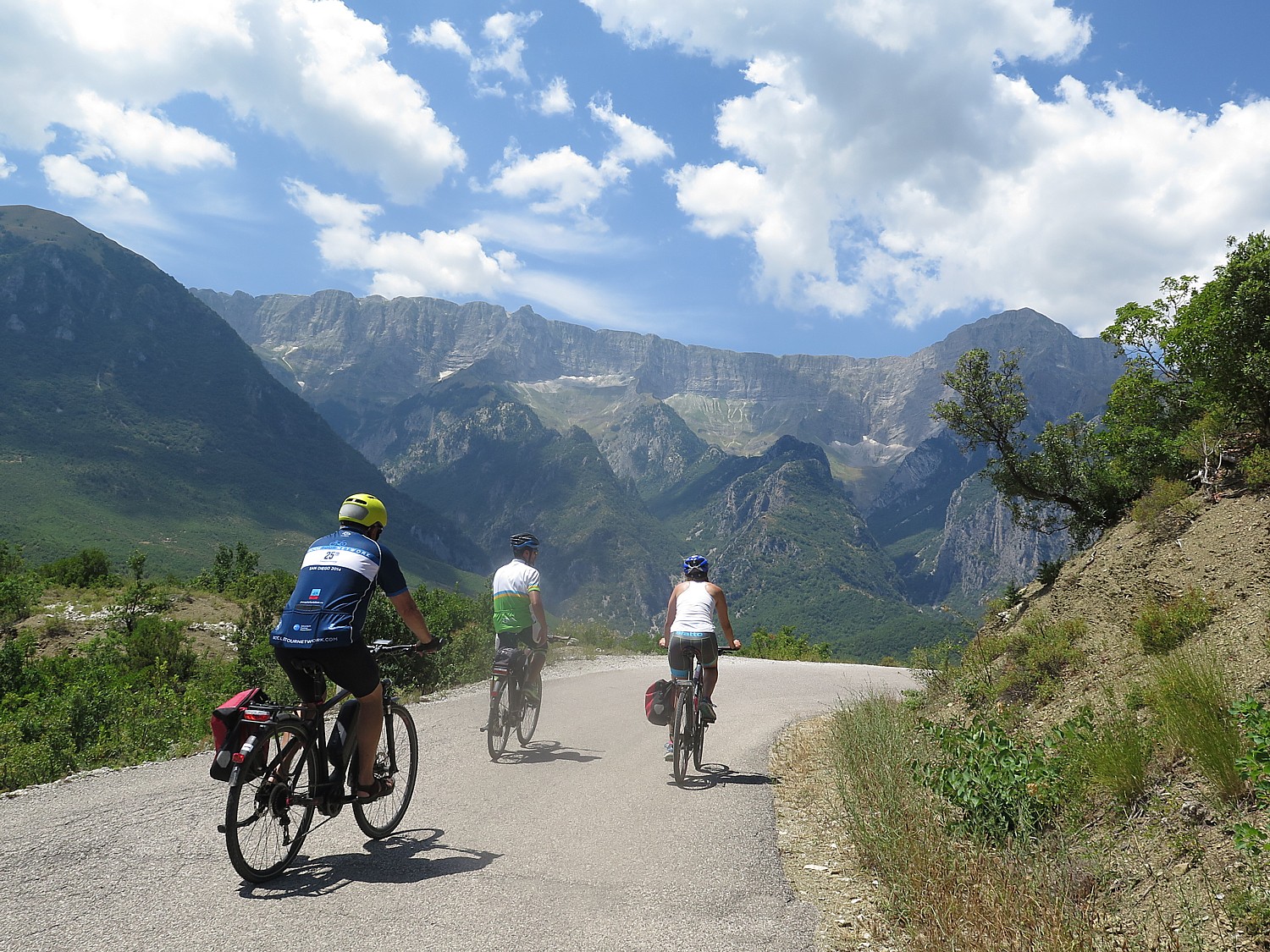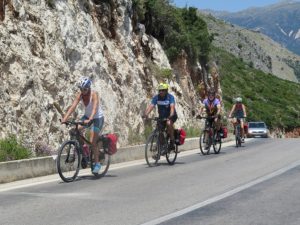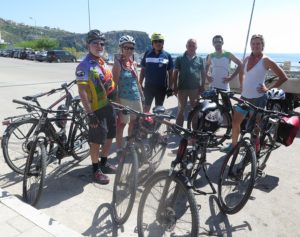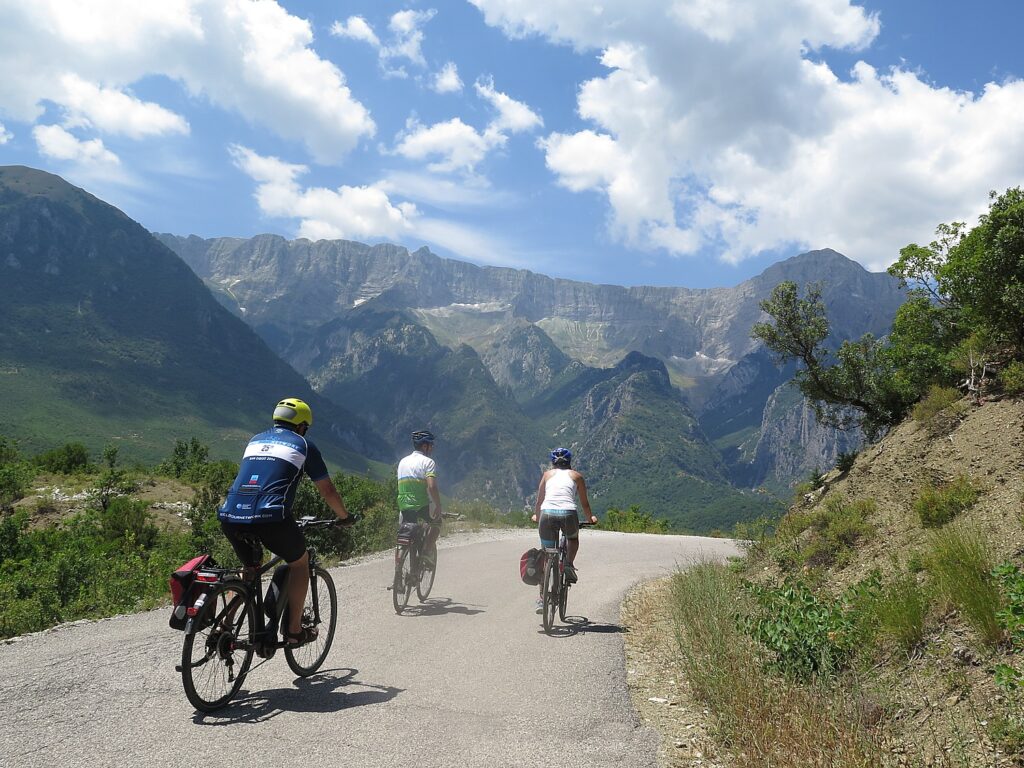
By Karen Rubin
Travel Features Syndicate, goingplacesfarandnear.com
Bike tour operators, many still with marvelous fall 2021 itineraries available, are gearing up for 2022, many offering next year’s tours at this year’s prices for those who book early (most have liberal cancellation or change policies).
Responding to a boom in demand for biking, they are back to offering itineraries to international destinations that are classic favorites as well as newly emerging, off-the-beaten track places, as well as coming up with new domestic trips.
Biking has been extremely popular – ideal for enabling people to explore uncrowded destinations while being outside and sufficiently distant, while the wide availability of e-bikes have expanded the boundaries of where cyclists can venture.
Bike tours have been my favorite form of travel – you get to see things at just the right pace to really experience and enjoy, but still cover enough ground to be constantly delighted.
The best bike tours are designed to bring you to the most scenic and interesting places and attractions, provide accommodations in quaint local inns or even incorporate boat or barge.
There is a lot that the tour companies do, beginning with designing itineraries that maximize gorgeous scenery, immersion in local culture, and give you a great ride. They also shuttle bikes to the start and end of a daily ride if you aren’t riding point to point; shuttle luggage inn-to-inn (unless you are on a boat or barge tour, the added beauty of a boat or barge tour is that you don’t have to pack and unpack); booking charming accommodations and dining; and often arrange sightseeing as well as dining experiences. They also can change the itinerary on the spot should circumstances warrant and provide assistance if there is any difficulty along the way.
Self-guided trips also provide a lot of support beginning with an intensive orientation by a guide who provides detailed maps of the route (if not online GPS navigation) and vouchers to the pre-booked accommodations, shuttle luggage from one inn to the next, makes sure the bike properly fits and provide links to service if necessary.
Jim Johnson, Biketours.com founder and company president, preaches the benefits of bike tourism as one of the best ways to explore and become immersed in a destination, heritage and local cultures, a low-carbon, ecologically-friendly way to travel, and especially now, with more interest in being away from crowds.
“By creating a world almost devoid of tourism, the pandemic has provided us with a unique opportunity–a blank slate, in effect–to define what tourism will look like in the future. Bicycle travel provides a superb model for more responsible tourism, for better, more authentic experiences, and for more comfortable traveling,” Johnson writes on his Tailwind blog.
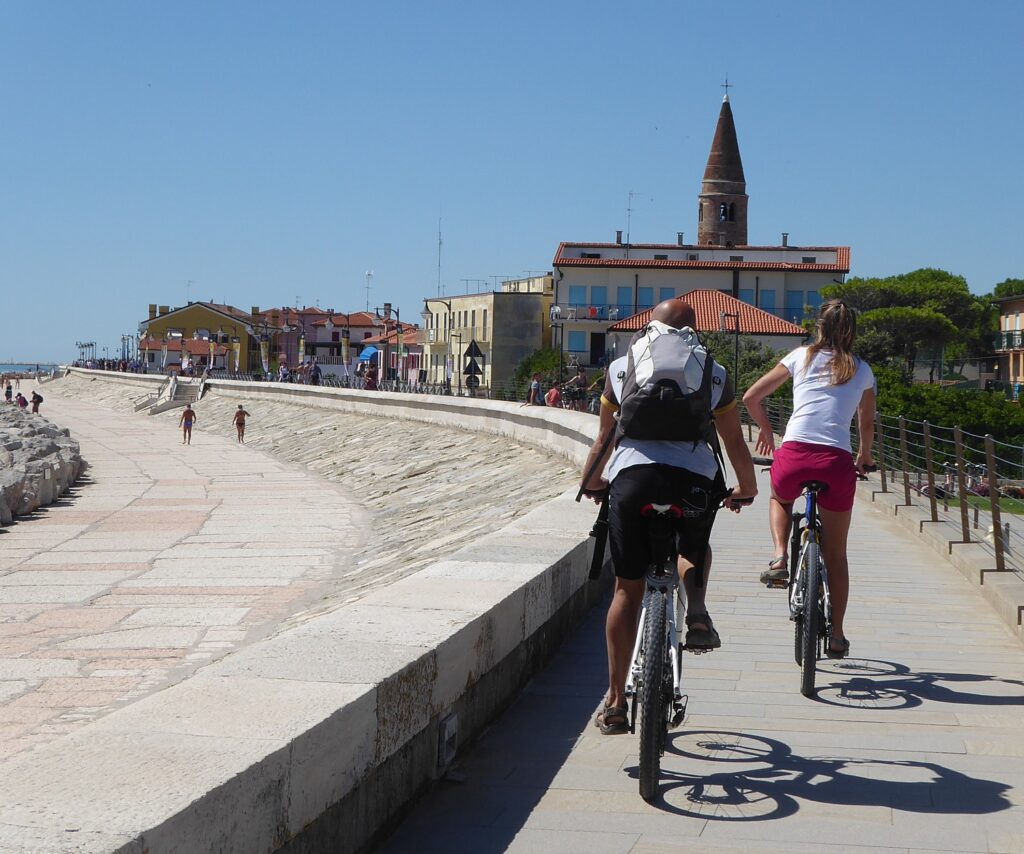
BikeTours.com has a fabulous catalog of European destinations, from Albania to Bosnia and Herzegovina, to Estonia and Montengro, Romania and Slovenia.
Johnson offers this list of eight lesser-traveled European bike tour destinations deserving a visit: Bulgaria; Transylvania; Slovenia; Connemara Ireland; Apulia, Italy; Umbria, Italy; the Balkans.
I’ve traveled with BikeTours through Albania (by e-bike), on an incredible bike and boat tour through the Greek Islands, and guided tour of Slovenia, and self-guided trips on Danube Bike Trail and Venice to Croatia. The company is a broker for superb in-destination bike tour operators that provide excellent service, bikes, delightful accommodations, and offers excellent value.
I’m next eyeing one of Biketours.com’s Amsterdam-Bruges by bike and boat.
You can join Johnson on his Founder’s Tour, November 6-13, 2021, for Bike the South’s final Athens to Savannah tour of the 2021 season.
“I founded Bike the South during the pandemic, and I hope some of my BikeTours.com friends who have delayed overseas travel will join me for this last-minute domestic opportunity.”
The cost per person, double occupancy, $2,879, includes a donation to the Georgia Hi-Lo Trail, a 250-mile paved path under development from Athens to Savannah. This tour also helps create awareness about the project and demonstrate the potential economic impact of the trail and sustainable tourism on rural Georgia. (Contact [email protected], www.bike-the-south.com/tours/athens-to-savannah).
Biketours.com, Chattanooga, TN, 877-462-2423, [email protected], biketours.com.

You can lock in your Discovery Bicycle 2022 biking adventure and your preferred dates for international tours, including the Moselle River Bike & Barge, by booking by November 1.
The 8-day Moselle River Bike & Barge tour, August 13-20, 2022, is maxed out at 24 passengers on the Iris. Just as on other Discovery Bike barge tours, there are two guides and a support van that accompany the riders; breakfasts and most dinners are on board. Cabins have two beds and a shower ($3695).
International travel will likely be extra popular in 2022 so it is recommended to book early.
Here are other international offerings from Discovery Bicycle:
In Europe tours are scheduled in Scotland, England, Ireland or Denmark; in Italy, three itineraries to choose from: Tuscany, Puglia and Dolomites to Venice; in Iberia, cycle Spain’s gorgeous Catalonia or take a voyage on the ancient paths of El Camino de Santiago; or visit Portugal and taste the treasures of the sea.
Other international cycling trips are available in Chile, New Zealand and Vietnam. Closer to home, is Quebec’s Eastern Townships.
Discovery Bicycle Tours offers what may be the first to design an itinerary on New York State’s new Empire State Trail, from the tip of Manhattan to Albany (the trail continues north to the Canadian border, and connects with the 353-mile east-west Erie Canalway).
In addition, Discovery has domestic bike tours to Coastal Maine (which we enjoyed this summer); Cape Cod; Idaho; Mickelson Trail & Black Hills, South Dakota; Tucson & Saguaro National Park; Lake Champlain Islands; Crater Lake & Scenic Bikeways; Texas Hill Country; Florida Keys, Florida Gulf Beaches; California’s Death Valley; Taste of Southern California; and Vineyards , Canyons and Charming Inns of California.
Discovery Bicycle Tours, 2520 W. Woodstock Rd., Woodstock, VT 05091, 800-257-2226, [email protected], www.discoverybicycletours.com.
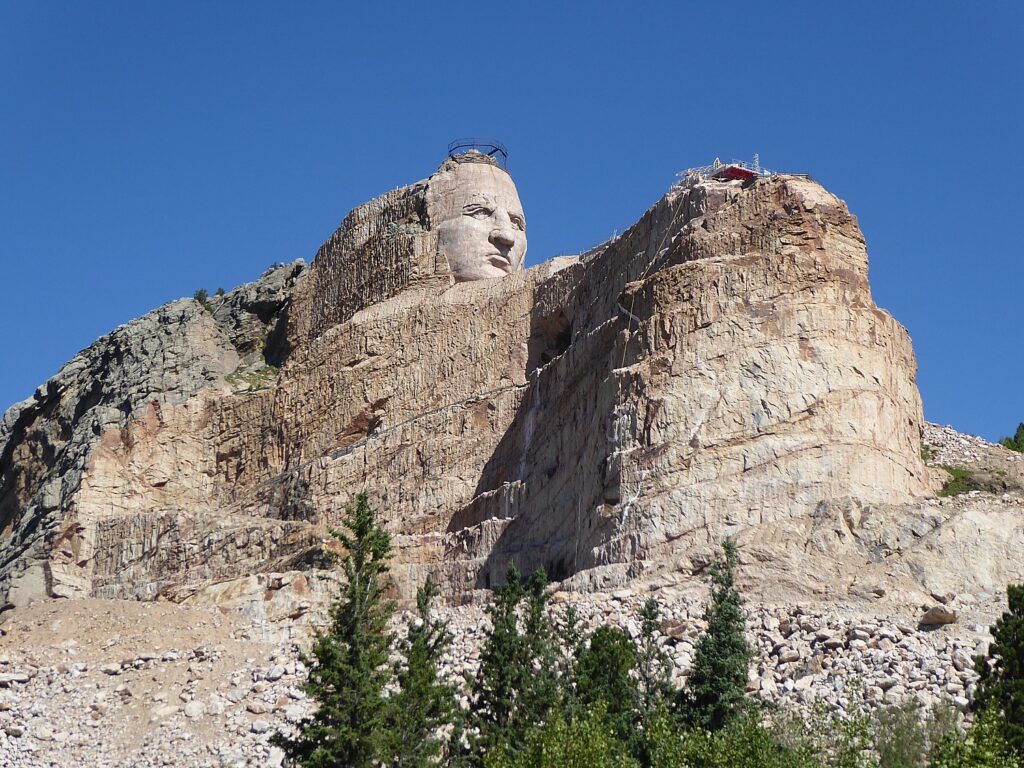
Bicycle Adventures is giving a $300 discount on 2022 bookings made by October 31. (No code is needed when booking online, your discount will be applied automatically to your balance payment.)
Bicycle Adventures has itineraries on some of the most wonderful rail trails, like the Mickelson in South Dakota (6 days, $2948) and Trail of the Coeur D’Alenes in Northern Idaho (5 days, $2898), which are ideal for beginners, and Washington’s Olympic National Park & Discovery Trail (6-days, $3398).
Its selection of road cycling itineraries include California Redwoods (6 days, $3698) and Montana’s Lewis & Clark Country (6 days, $3098), a new tour through the Valley of Fire & Death Valley in Nevada (6 days, $3148).
There are also international offerings including a new Ireland ‘s Wild Atlantic Way (7 days, $4373) and a new France Bike and Barge from Strasbourg to Lagarde in Alsace (7 days, $5123); other itineraries are available to Spain’s Medio Camino, Scotland’s Isle of Arran, Chile’s Lakes and Volcanoes, Mexico’s Yucatan, and for advanced riders, a bike, hike, paddle and sail through the Sognefjord, Norway’s longest, deepest fjord (8 days, $5180).
Bicycle Adventures, Seattle, WA, 800-443-6060, bicycleadventures.com.
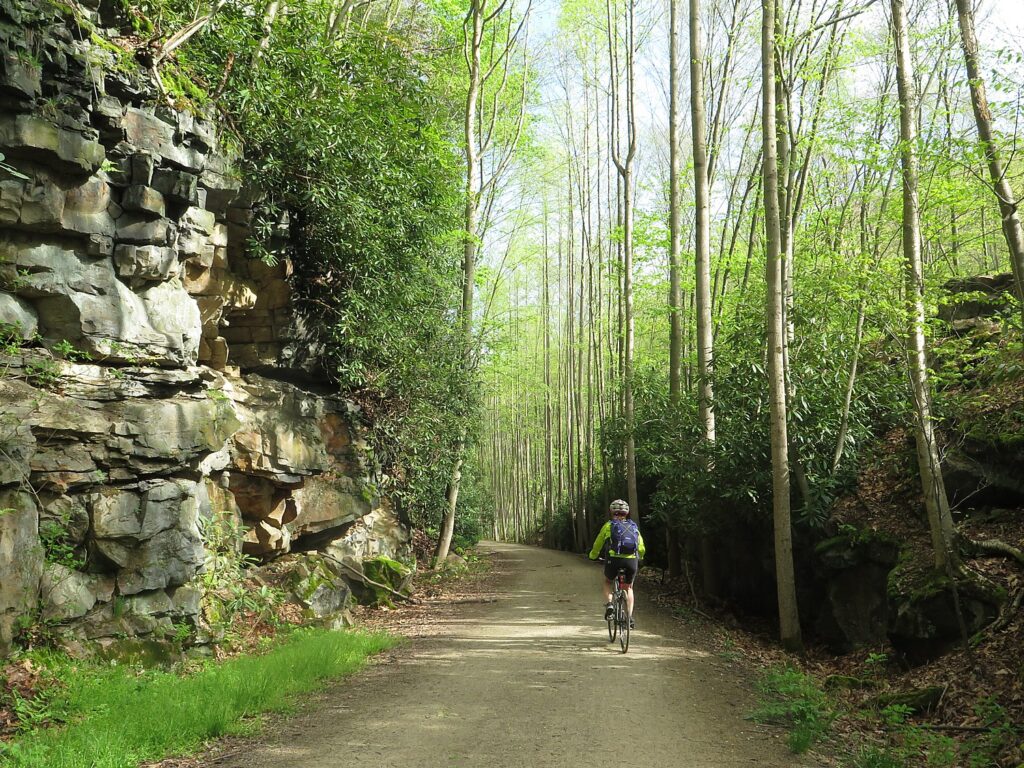
Wilderness Voyageurs has a marvelous selection of bike tours oriented around rail trails including the New York’s Erie Canalway, Florida’s Sun Coast, Idaho’s Hiawatha Trail, Pennsylvania’s Great Allegheny Passage and C&O Canal Towpath; Wisconsin’s Elroy-Sparta Trail, Missouri’s Katy Trail, South Dakota’s Mickelson Trail & Badlands (which I enjoyed). Explore Pennsylvania’s Grand Canyon cycling the Pine Creek rail trail, starting and ending in Black Lick that also features Bald Eagle State Park and Ghost Town trail (3 days, $975).
Wilderness Voyageurs offers a broad selection of road bike trips. Among the intriguing offerings is a “Kentucky Bike & Bourbon” tour that explores the state’s horse farms and whiskey-making (four days, $2100), plus trips through Pennsylvania including Amish Country, Gettysburg and the Civil War; in Virginia, Colonial Williamsburg Shenandoah and Skyline Drive; Washington’s San Juan Islands, and Texas Big Bend. The operator also has expanded its super-popular New York Finger Lakes bike tour to six-days ($2150).
Another featured bike tour is Cuba Clasico through central Cuba that takes you off the beaten path and Cuba’s tourist track. Biking from Havana, Santa Clara, Trinidad and Sancti Spiritus, Cienfuegos, it’s a tour through Cuba’s heritage and homeland from the best seat in the house—a bicycle seat (8 days, $3990).
Wilderness Voyageurs, 103 Garrett St., Ohiopyle, Pennsylvania 15470, 800-272-4141 , https://wilderness-voyageurs.com/
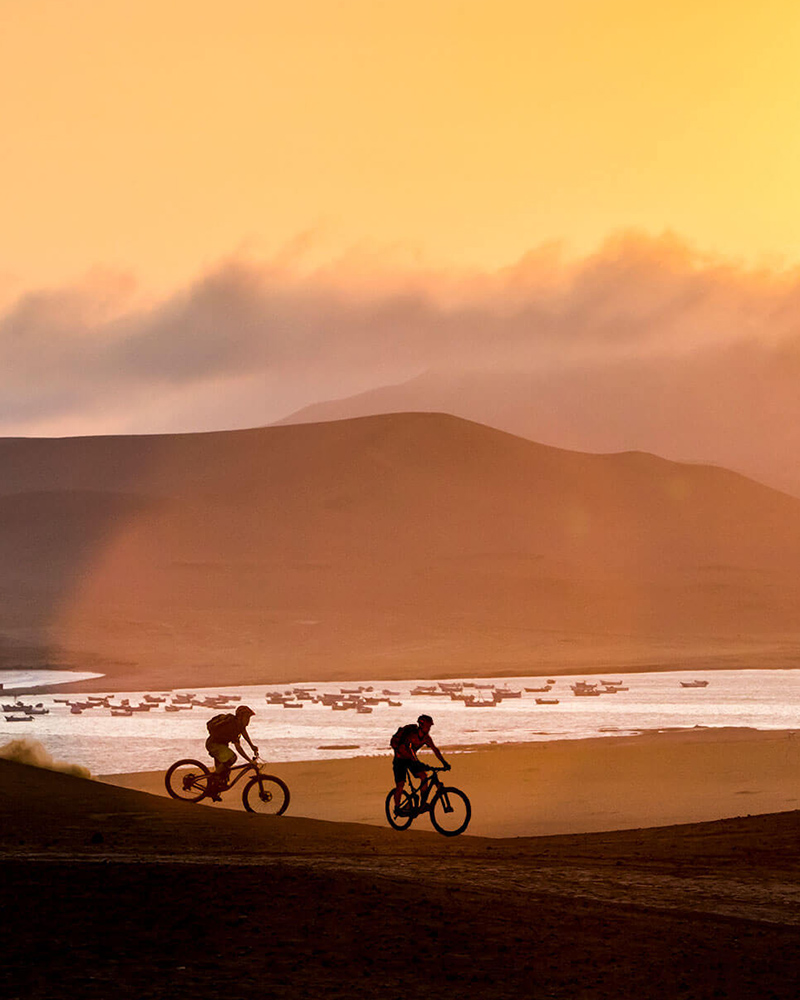
For 2022, Butterfield & Robinson is launching the collection of new trips that were supposed to be launched in 2020, but kept back because of the coronavirus pandemic. New scheduled trips for 2022 have been refined further to accommodate local regulations and are limited to 16 people – you can join other travelers on a scheduled departure or take over a trip and turn it private with your family and friends.
Kyushu Biking: In true Japanese style, each intricate detail of this trip was crafted with intention. Pedal into lush subtropical landscapes with green tea fields and smoking volcanoes on the horizon. Connect with the fascinating local culture from samurai practice to mythological stories and “power spots.” Talented chefs, brewers and artisans bring you closer to deep cultural roots, while each stay shows you a new way to relax and rejuvenate.
Alsace E-biking: Wind passed stretches of tidy vineyards, take the time to explore colorful towns and sample regional wines along the way. Alsace is a mix of France and Germany, blending cultures, flavors which make for a unique and hyper-local experience.
Butterfield & Robinson (which offers hiking and walking tours as well), has bike tours in Africa (for example, eight-days Morocco e-biking and Namibia Bespoke), Asia, Europe (like a 7-day Bulgaria biking and 6-day Cotswold-Bath biking), Latin America (like 7-day Chile Wine country and a Costa Rica Bespoke), and North America (for example, Quebec Bespoke). There is a selection of self-guided trips, as well as guided.
Butterfield & Robinson, Toronto, Ontario, Canada, 866-551-9090, www.butterfield.com, [email protected]

In 2022, Duvine Cycling & Adventure Co. is traveling to England for the first time, hitting the rolling hills for a new Cotswolds Bike Tour (5 days, $4895).
The company has an extensive catalog of “classic” bike tours all over the world including the United States, like a new four-day Hudson Valley Bike Tour ($3695); a new six-day Maine tour to Camden and Penobscot Bay (3995); a new Santa Fe and Taos bike tour (5 days, $3595), a four-day Shenandoah Valley ($3595) and a four-day Blackberry Farm Bike tour in Tennessee’s Smoky Mountains ($6495)
Also new is a Sardinia Yacht & Bike Tour in Italy (7 days, $7695) and new private tours including an 8-day Maui Villa bike tour (8 days, $6995); a 7-day Tuscany Villa Bike Tour (7 days, $5995) and a 7-day Mallorca Villa Bike tour.
Duvine, Somerville, MA, 617 776 4441, 888 396 5383, [email protected], duvine.com.
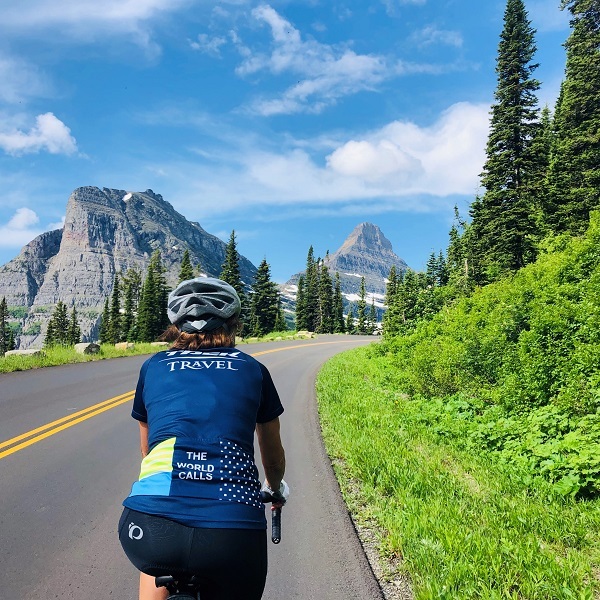
Trek Travel is celebrating 20 years of cycling vacations in 2022 by inviting people to cycle through a bucket-list destination and the company sure offers many of them spanning the globe – in Europe like a new self-guided Ireland trip (6 days, $2599); a new self-guided Scotland tour (6 days, $2299); a new self-guided Portugal tour through Alentejo region (5 days, $2199). For avid riders, a new “Classic Climbs-Slovenian Alps Tour” (6 days 3899), and a 6-day tour through the Greek islands of Crete and Santorini ($5499); South America (Chile, 7 days, $5699); Asia (Japan Bike Tour, 7 days, $8799) and North America (South Dakota Glamping, 5 days, $3299).
What could be more “bucket list” than “Classic Climbs: The Tour Bike Vacation” which has you ride the most famous climbs of the Tour de France on a nine-day cycling tour of the Alps and Pyrenees. You ride the legendary cols of Aubisque, Galibier and the mythic Ventoux, along with the test of all tests: the grueling ascent up Alpe d’Huez, following in the tracks of pro riders.
Trek Travel, 613 Williamson St., Madison,WI, 866-719-2427, https://trektravel.com/
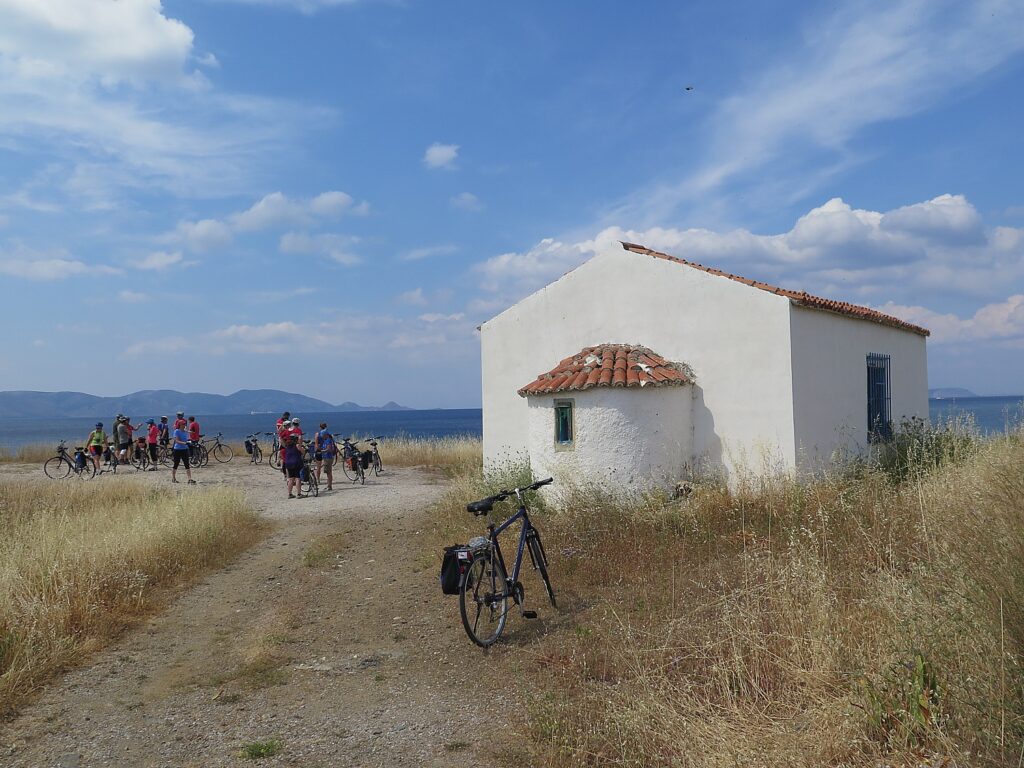
BSpoke Tours curates cycling itineraries with an eye toward eco-friendly cycling holidays to European destinations: For history and wine lovers, Bordeaux; for cyclists looking for an adventure in an authentic corner of Spain, Asturias where one third of the region is environmentally protected with nature reserves and protected landscapes.
Among its new trips is a curated tour by e-bike in Sussex and the Cotswolds, starting in the north at Moreton-in-Marsh and an opportunity to visit Stratford-upon-Avon, the birthplace of William Shakespeare, continuing down the picture-perfect countryside to the south, stopping in beautiful towns and villages, including Bourton-on-the-Water, Upper & Lower Slaughter, Tetbury, Cirencester and Bibury and ending in the Roman spa town of Bath.
Another new UK program explores Scotland’s most iconic castles and coastlines by road bike.
BSpoke Tours also offers itineraries throughout Europe –including e-bike and boat-and-bike programs, food-and-wine, eco-friendly, luxury, self-guided, group. New offerings include the island of Sardinia, and in Puglia in Italy; and Andalusia and Camino di Santiago in Spain.
BspokeTours is touting its flexible booking policy because of uncertainty about travel plans. Deposits have been removed and change fees eliminated so you can change your date and destination for no cost up to 12 weeks before departure (monies paid are secured through ABTA and ATOL).
BSpoke Tours, [email protected], bsoketours.com (has a live chat option).
Discover France is featuring biking trips through the Loire Valley, where there is a 800 km cycle route. A large stretch of the Loire is a UNESCO World Heritage Site; in parts it’s also known as France’s Valley of the Kings and as The Garden of France. All along The Loire Valley, you stick closely to France’s last great wild river, with its sandy banks and islands, its vine-covered slopes, its typical towns and villages, its fine food and its unique atmosphere. The route ends at the Loire’s Atlantic estuary.
A five-day/six-night “Loire Valley Secret Castles” bike tour starts in Joué-les-Tours and takes you to Azay-le-Rideau, Langeais, the Chateau de Villandry and Ussé, and the famous Fontevraud Abbey. You cycle through some important wine regions such as Chinon and Saumur for some wine tasting. This is a self-guided trip (start any day), priced from 760E.
Among the new itineraries: self-guided French Riviera-South of France by the Coast, from Nice to St. Tropez (6 days, 1280E); and self-guided Veloscenie From Nogent le Rotrou to Mont Saint Michel (7 days, 1570E).
Also: an 8-day Bordeaux Vineyards by Bike tour travels Saint-Emilion to Entre-Deux-Mers (1550E); a 7-dayAlsace by the Wine Route (1350E). There are also itineraries through Champagne and Burgundy.
Discover France, 427 Rue Hélène Boucher, Mauguio 34130, France, 800-929-0152, discoverfrance.com.
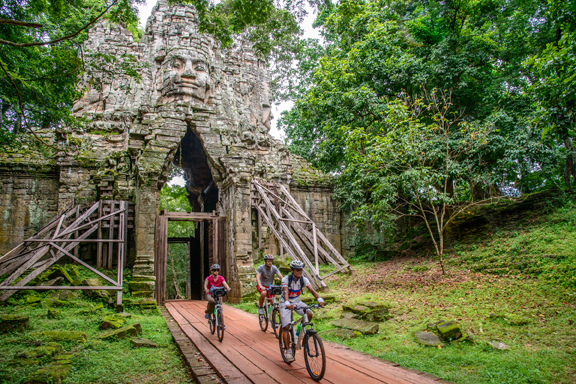
Other prominent bike tour companies include Backroads Bicycle (backroads.com), Pure Adventures (pure-adventures.com), Escape Adventures (escapeadventures.com), Freewheel Holidays (ww.freewheelholidays.com, www.freewheelholidays.co.uk) Grasshopper Adventures (grasshopperadventuers.com), Ride & Seek (www.rideandseek.com).
______________________
© 2021 Travel Features Syndicate, a division of Workstyles, Inc. All rights reserved. Visit goingplacesfarandnear.com, www.huffingtonpost.com/author/karen-rubin, and travelwritersmagazine.com/TravelFeaturesSyndicate/. Blogging at goingplacesnearandfar.wordpress.com and moralcompasstravel.info. Send comments or questions to [email protected]. Tweet @TravelFeatures. ‘Like’ us at facebook.com/NewsPhotoFeatures


